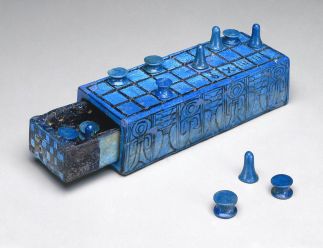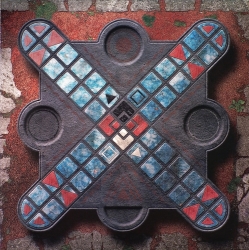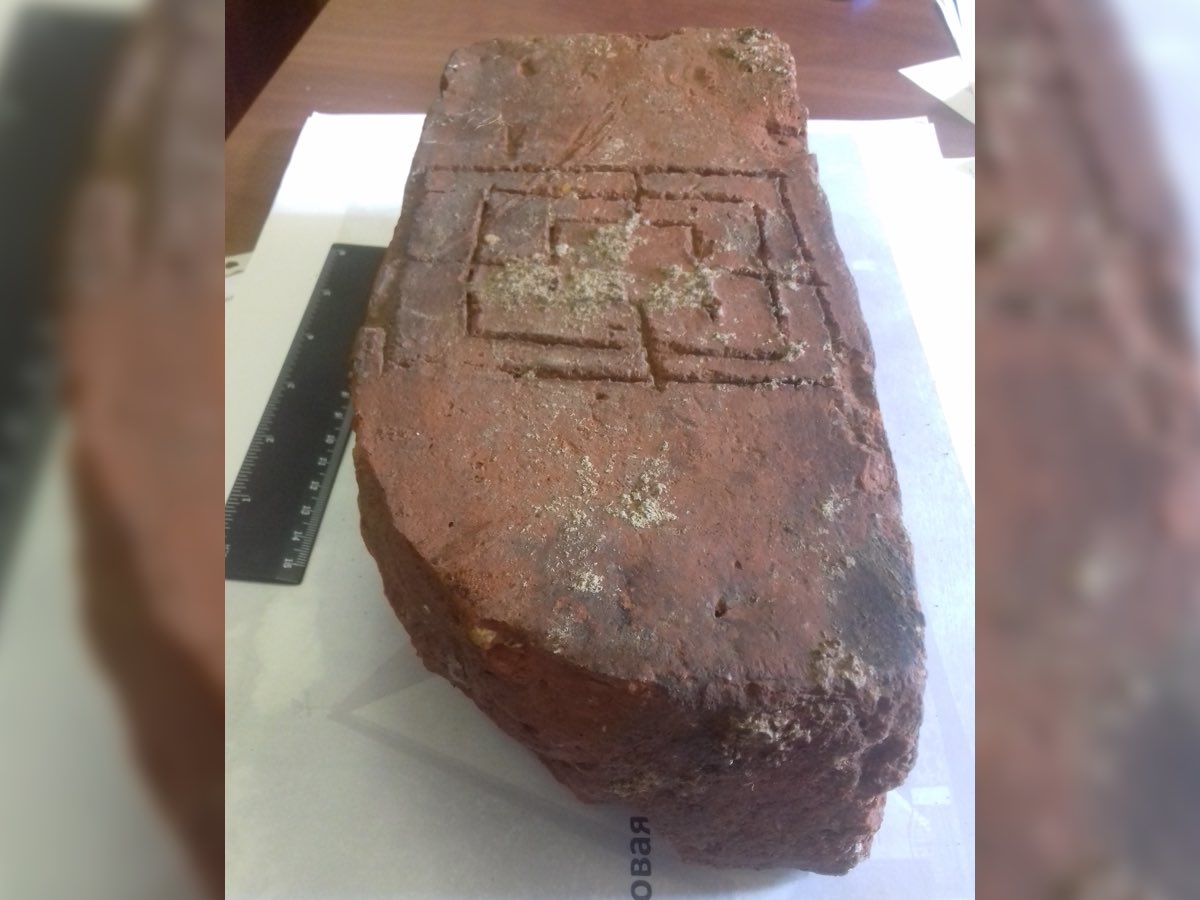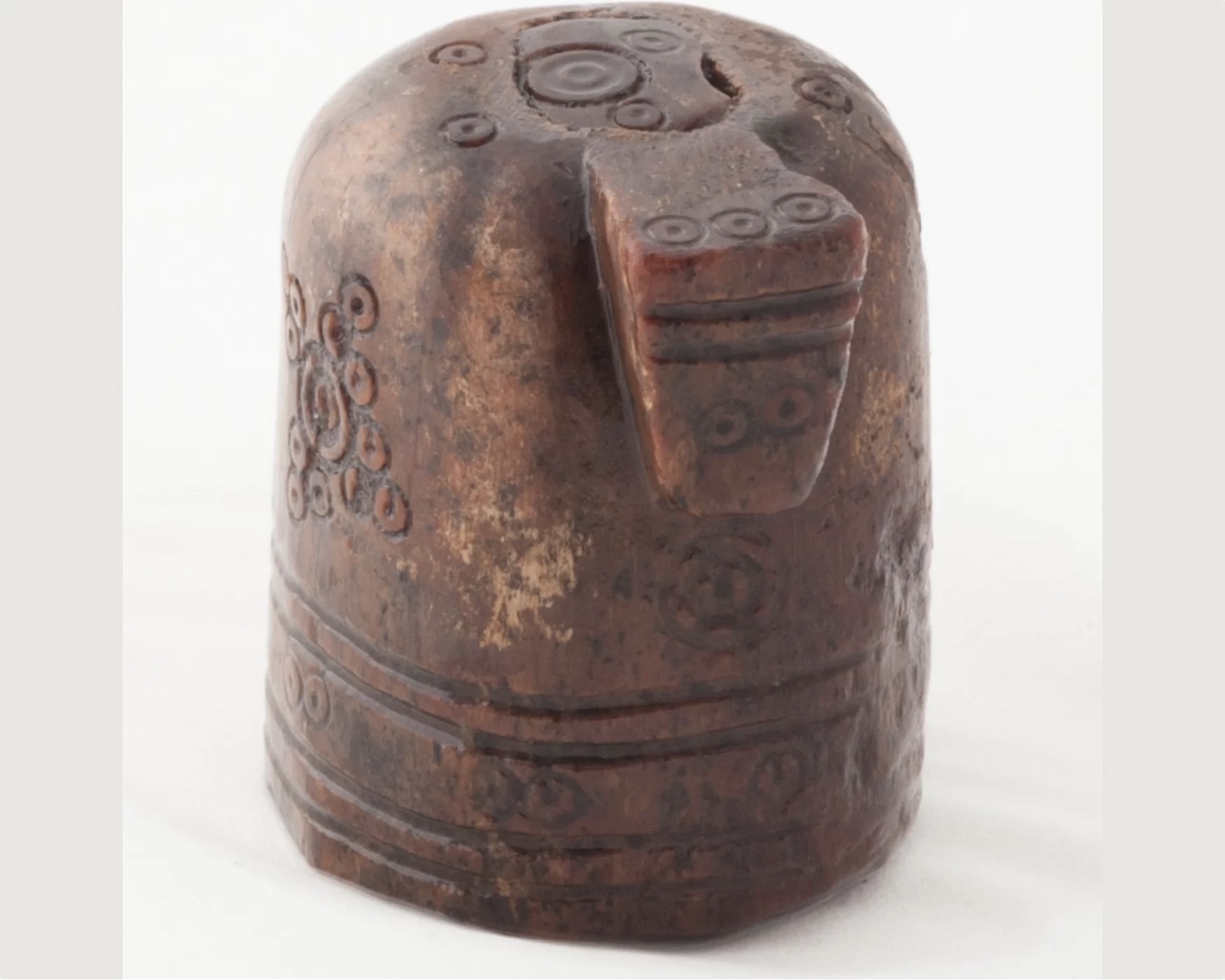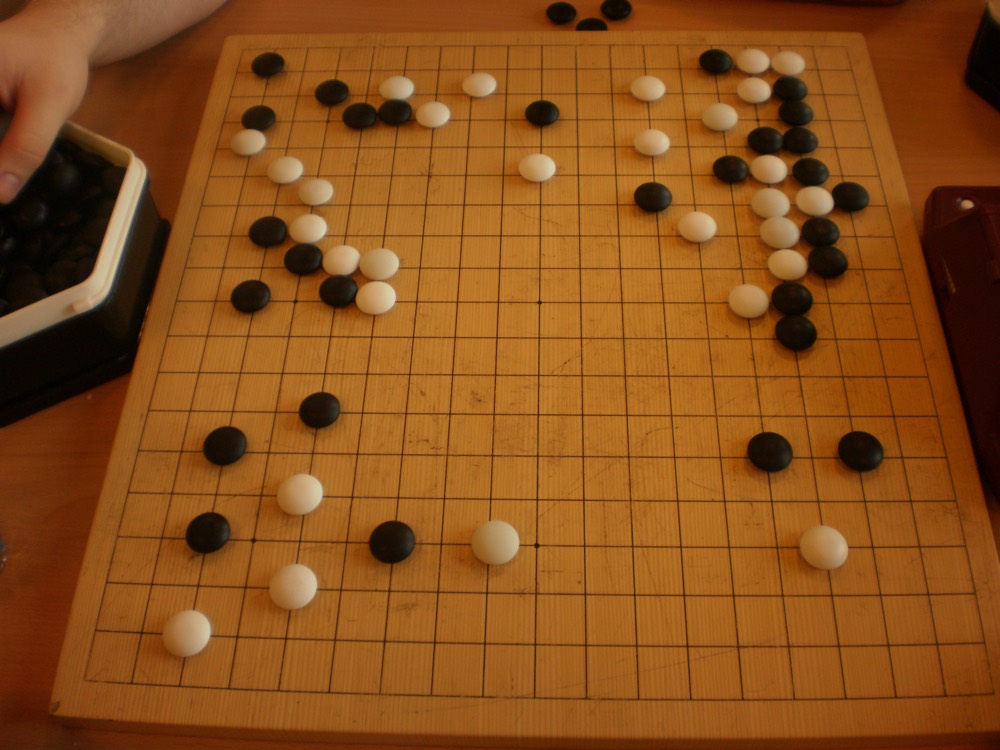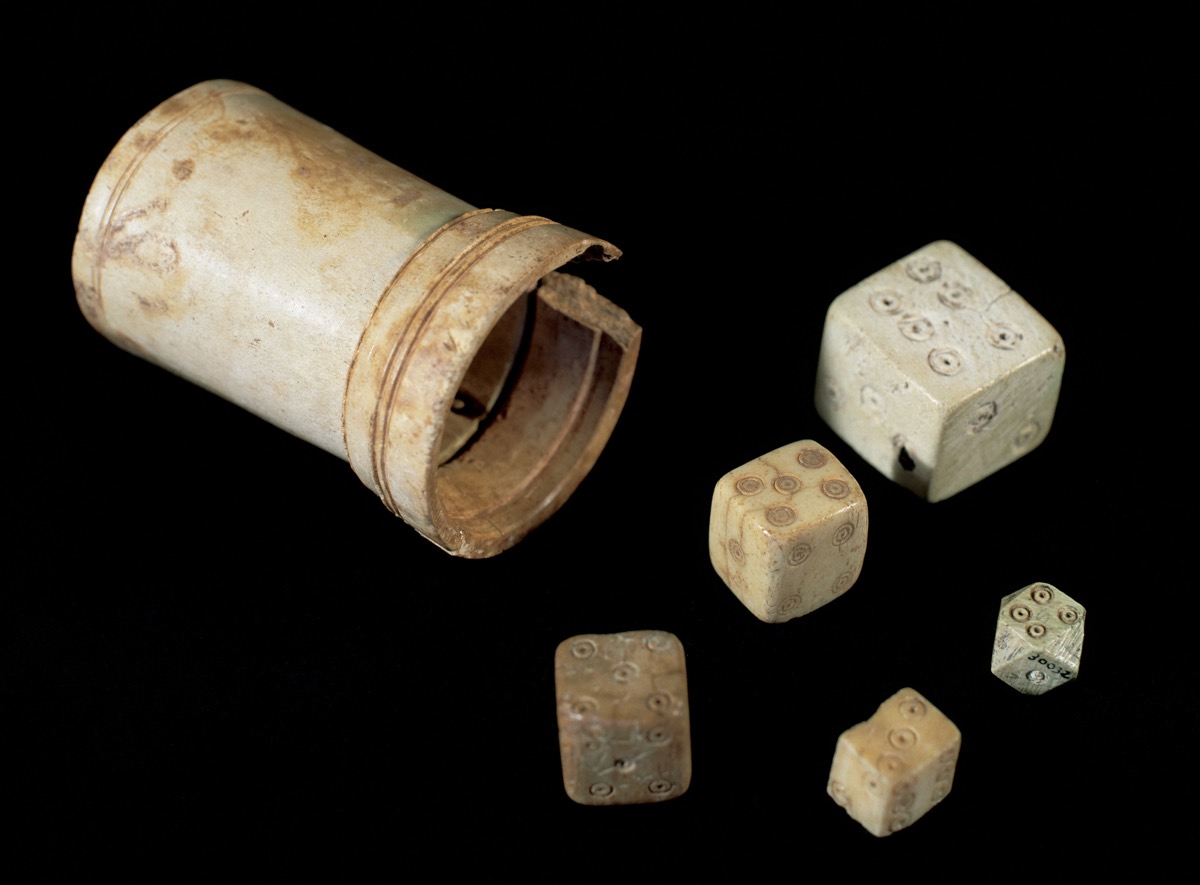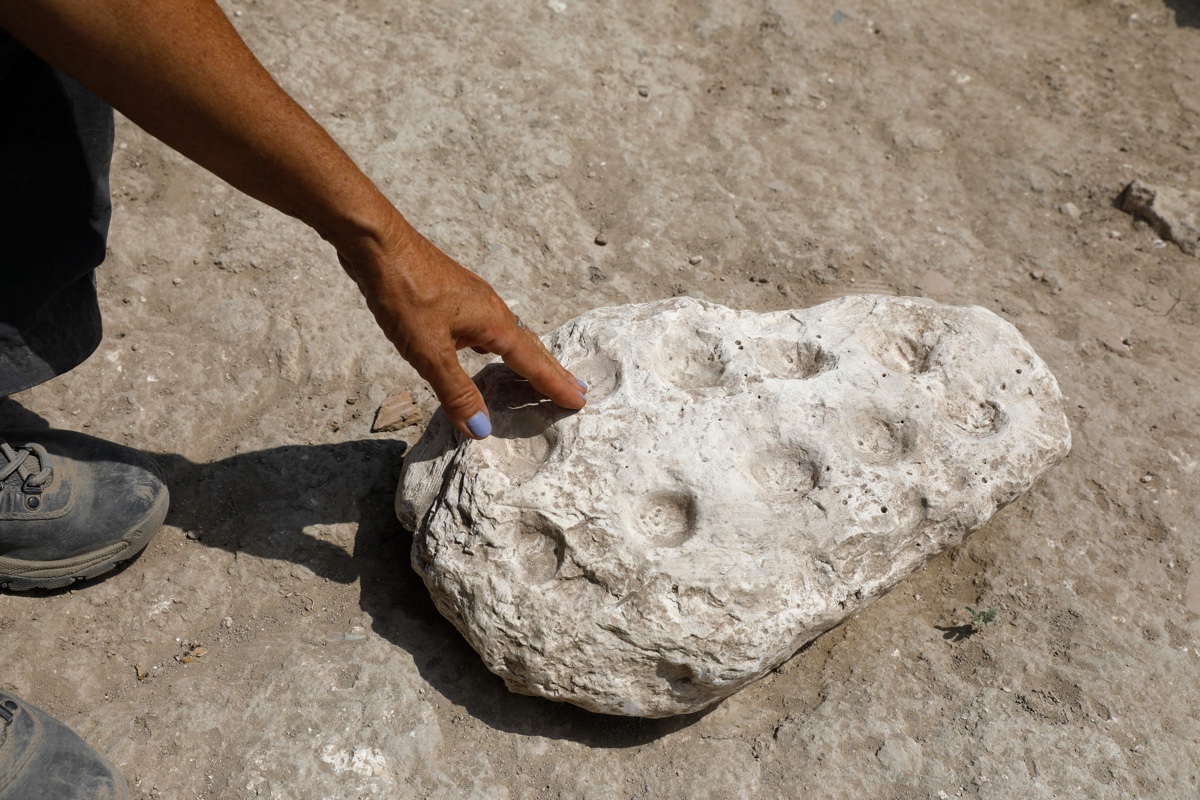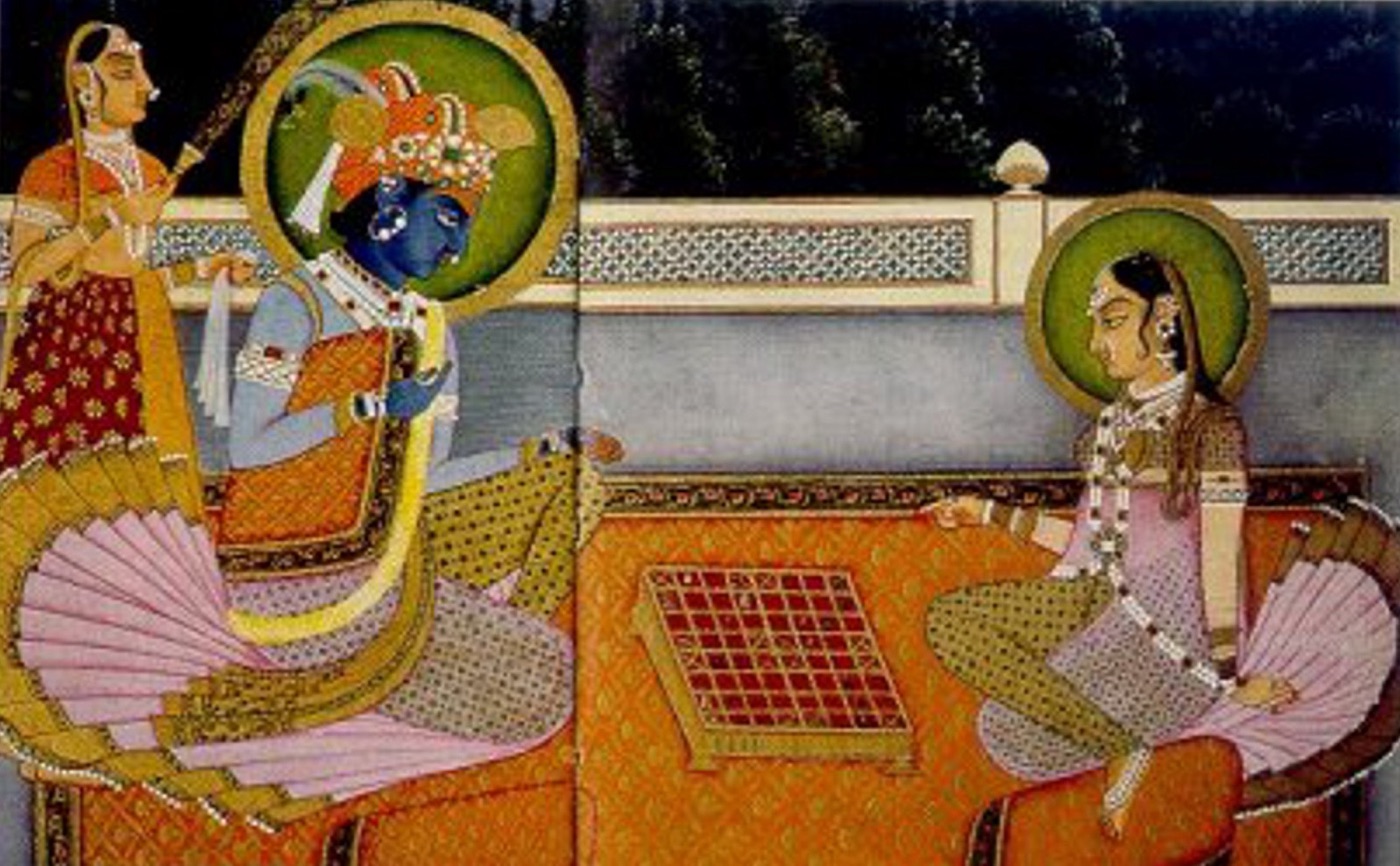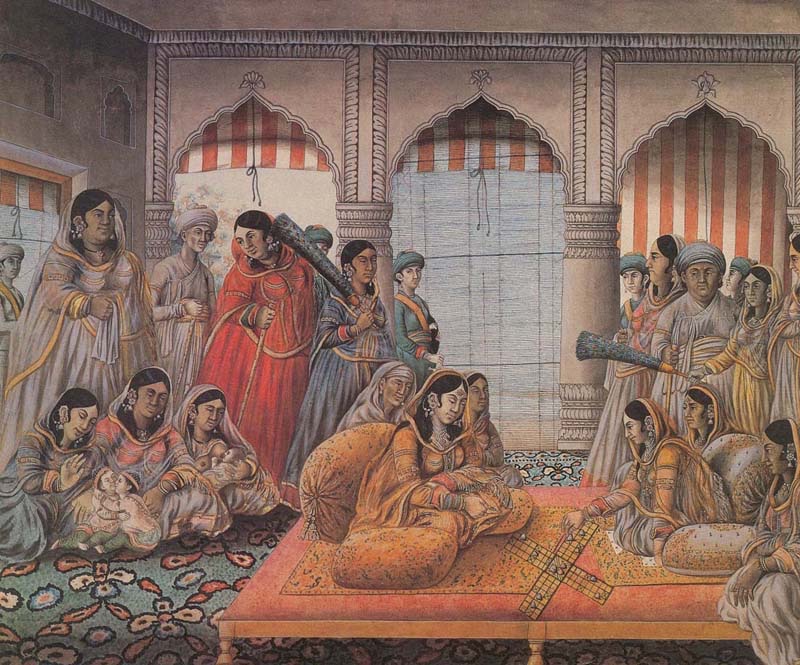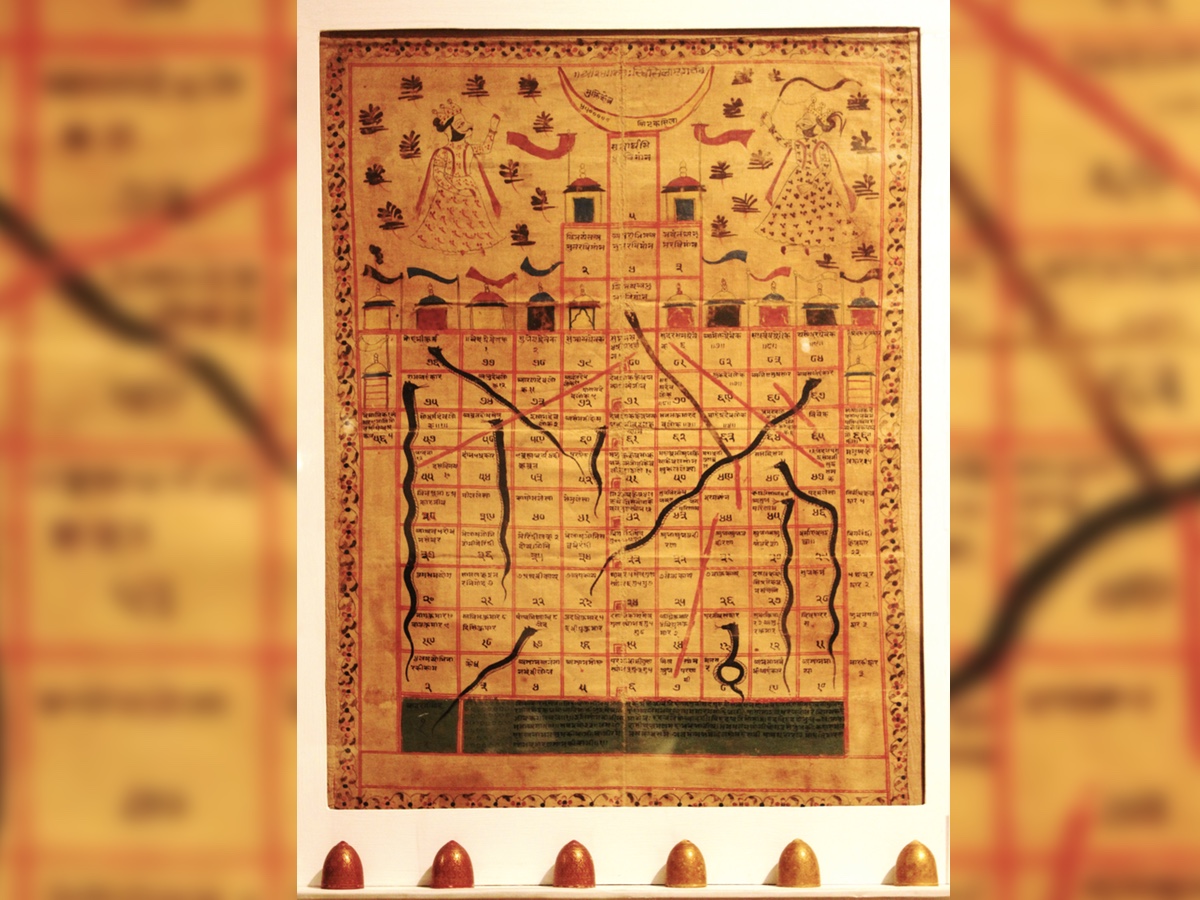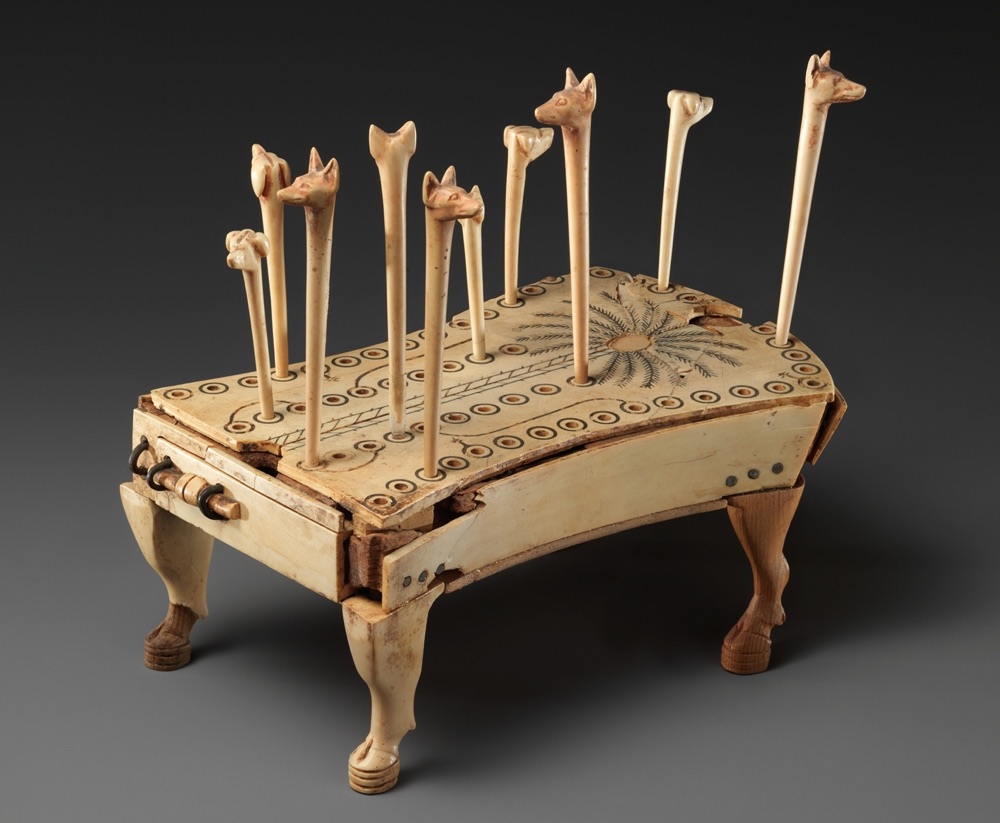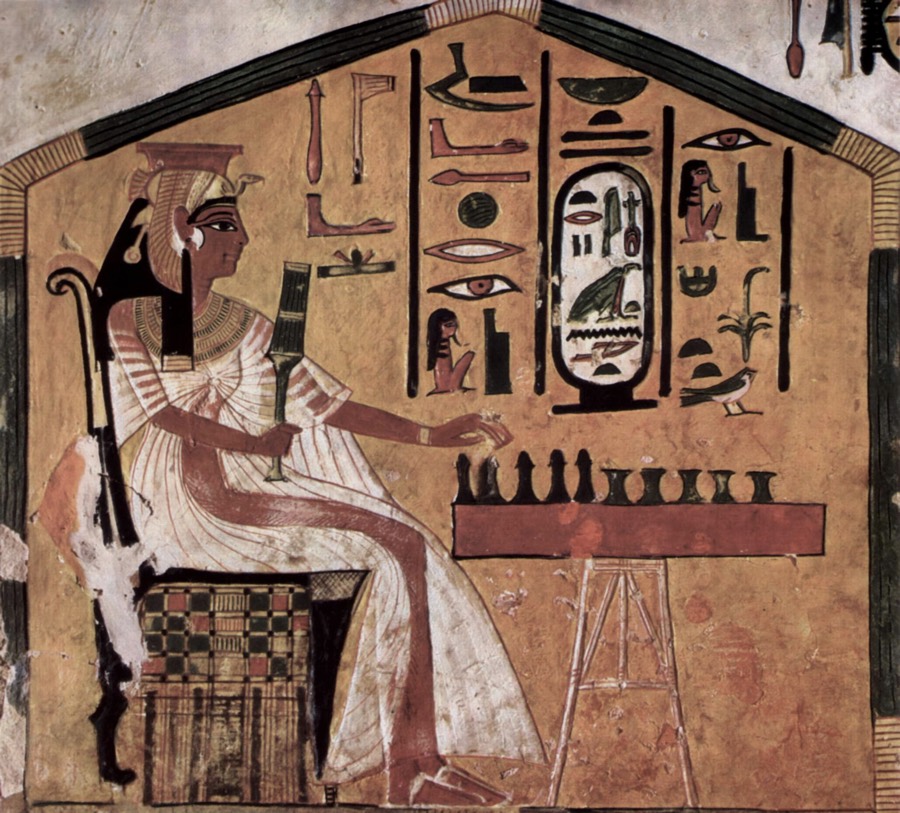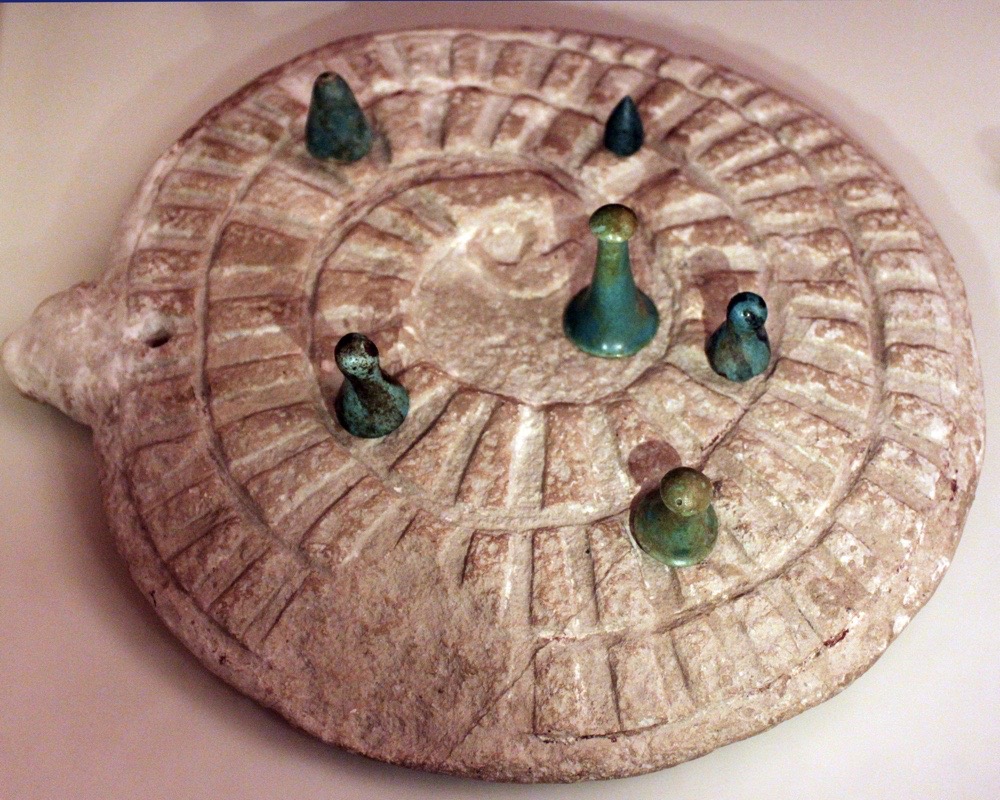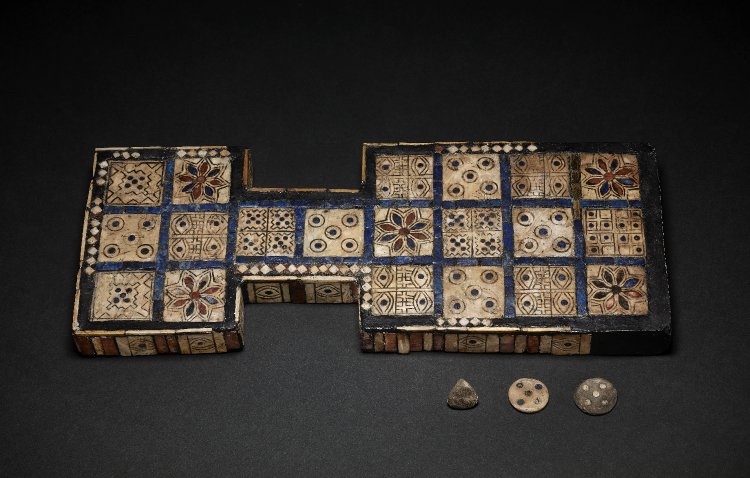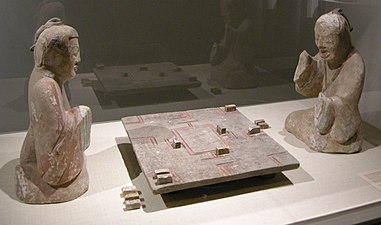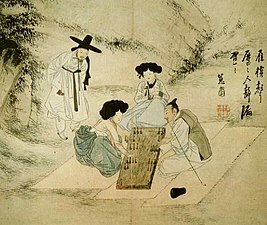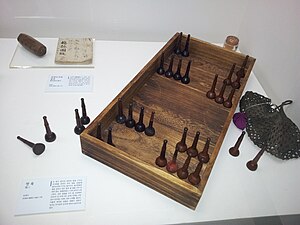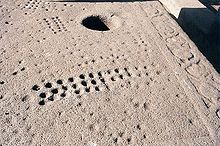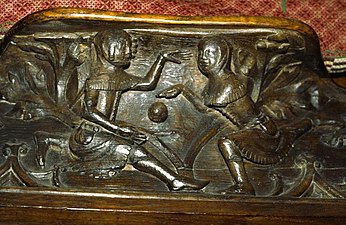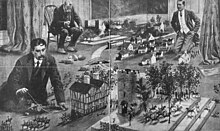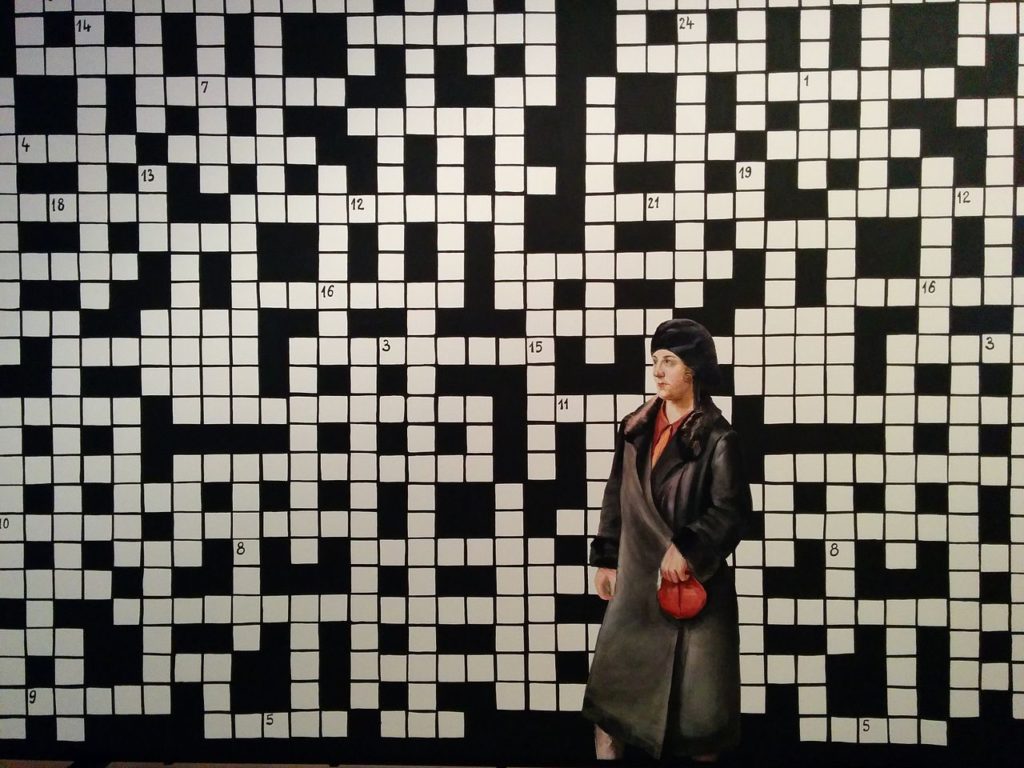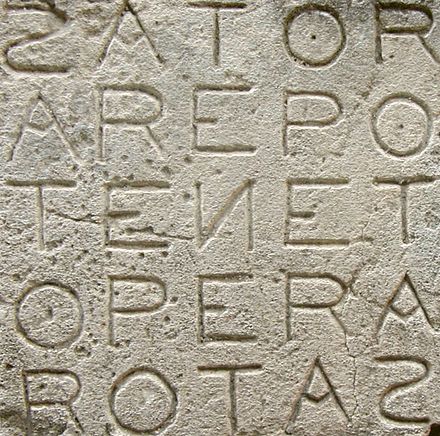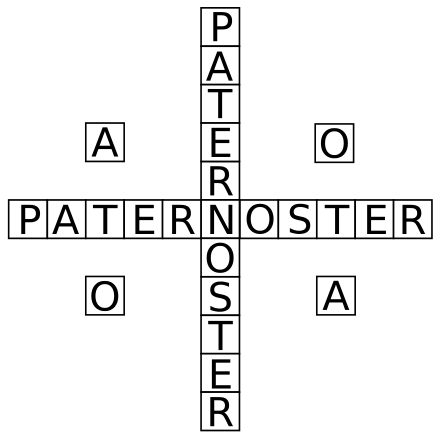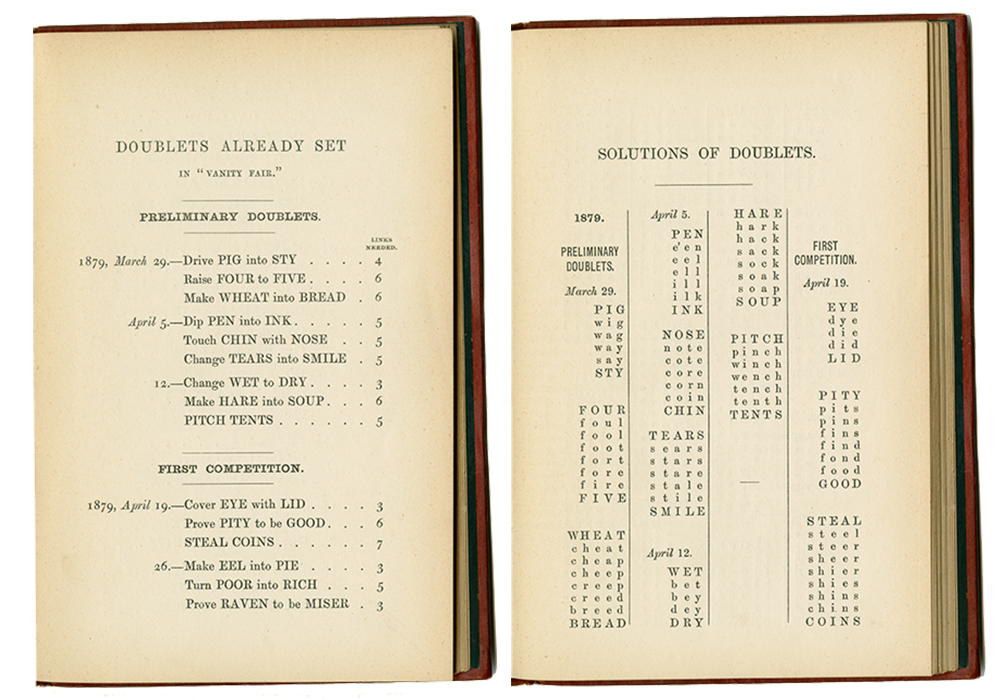The video game industry has grown into a multi-billion dollar industry and shows no signs of slowing down. According to one source, the industry as a whole is expected to be worth over $230 billion by 2022.
It may be hard to believe, but the video game industry is only about 50 years old. Video games trace their history to the 1950s, but their mainstream popularity and industry did not emerge until the 1970s. Since then, the interest in video games has grown exponentially and playing video games is now one of the most popular pastimes around the world.
10. Gun Fight (Western Gun)
Release Date: 1975
Creator(s): Tomohiro Nishikado of Taito
Country of Origin: Japan
Genre(s): Multidirectional shooter
Mode(s): Two-player
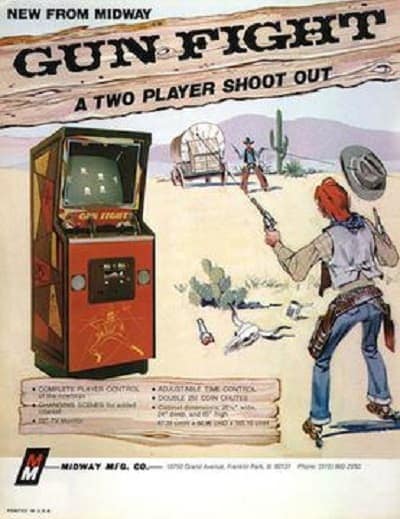
Gun Fight, which was called Western Gun in Japan and Europe, was one of the first widely successful arcade games released by Japanese video game company, Taito. The game was one of the first to depict human-to-human combat. Western Gun was designed by Tomohiro Nishikado, who created several games while working for Taito, most notably Space Invaders.
Taito licensed Western Gun to Midway for release in North America. Midway changed the game’s name to Gun Fight, which made more sense to American audiences. The Midway version of the game was the first video game to use a microprocessor.
9. Tank
Release Date: November 5, 1974
Creator(s): Kee Games, a subsidiary of Atari
Country of Origin: USA
Genre(s): Maze
Mode(s): Multiplayer

Tank was the only original title released by Kee Games, which was a subsidiary of Atari. Kee Games was created to sell clones of Atari titles to distributors as a fake competitor. Tank was completely original and was designed by Steve Bristow and developed by Lyle Rains.
The game was created because Bristow wanted to move Kee Games away from only producing copies of Atari’s games into also developing original titles.
One month after Tank was released, Atari announced a merger with Kee, which came at perfect time for Atari as the company was facing financial troubles. Atari was helped by Tank’s commercial success, which sold over 10,000 units. This success led four Tank sequels over the next few years.
8. Gran Trak 10
Release Date: May 1974
Creator(s): Atari
Country of Origin: USA
Genre(s): Racing
Mode(s): Multiplayer
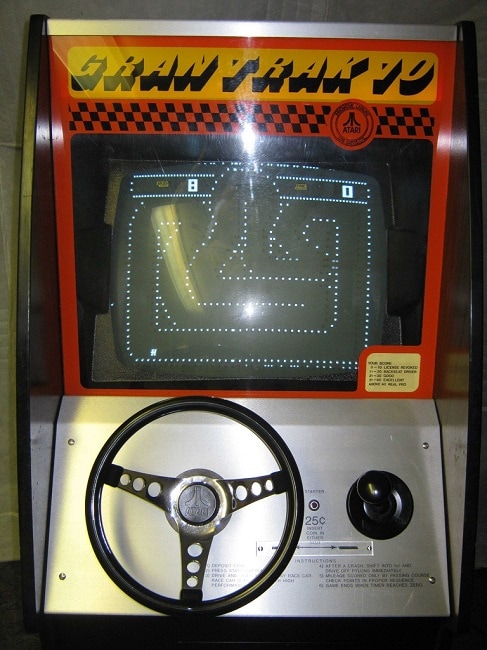
After Space Race was unsuccessful, Atari made a second attempt at releasing a racing game with Gran Trak 10. Although Space Race was also a racing game, Gran Trak 10 is considered to be the first arcade car racing game. The game was controlled by an actual steering wheel, accelerator and brake pedals, and a gear stick — this setup would later be used in nearly all arcade racing games.
Gran Trak 10 was initially designed by Larry Emmons of Cyan, with the mechanical design handled by Eigen Systems. Allan Alcorn, who developed Pong, overhauled Gran Trak 10 and made it ready for a wide release in May 1974. Although Atari underestimated the manufacturing costs of Gran Trak 10 — which led to Atari losing $500,000 for that fiscal year — the game was successful.
7. Space Race
Release Date: July 16, 1973
Creator(s): Atari
Country of Origin: USA
Genre(s): Racing
Mode(s): Multiplayer
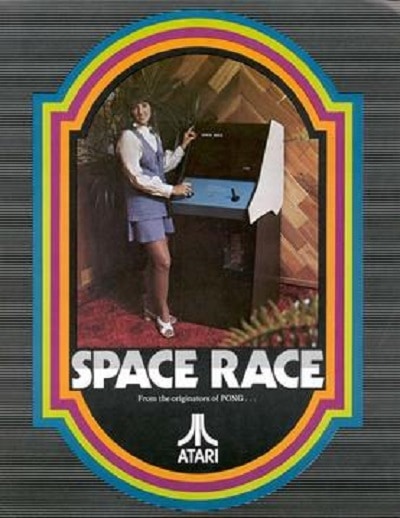
Space Race was the second game released by Atari after the success of Pong. Development of Space Race began in the summer of 1972 and was initially called Asteroid. It was based on ideas from Atari co-founders Ted Dabney and Nolan Bushnell.
The game was a commercial failure and was only created to fulfill an earlier contract that Atari had made with Bally Midway. Despite its lack of success, Space Race inspired Japanese video game developer Taito to make a clone game called Astro Race. Additionally, Space Race is notable for being the first racing arcade video game.
6. Pong
Release Date: November 29, 1972
Creator(s): Allan Alcorn while working for Atari
Country of Origin: USA
Genre(s): Sports
Mode(s): Single player and multiplayer
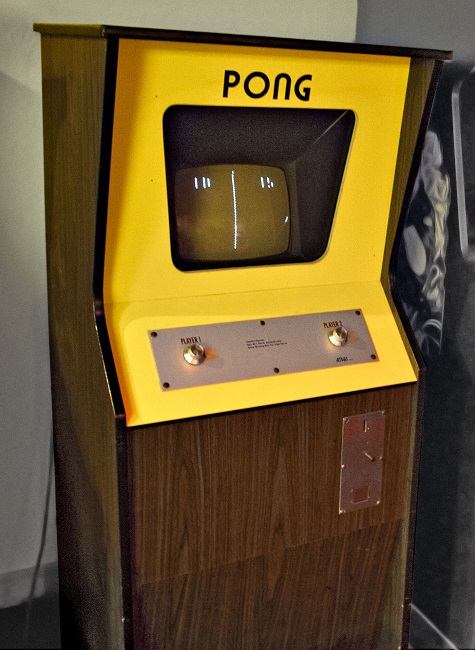
Although all of the games on this list influenced the video game industry in some way, Pong‘s success made the video game industry a viable business. Pong was created by Allan Alcorn as a training exercise assigned to him by Nolan Bushnell, the co-founder of the newly renamed video game company Atari (it was previously called Syzygy Engineering).
Bushnell and Atari co-founder Ted Dabney liked Alcorn’s work and decided to manufacture the game.
Pong was an immediate hit and it is considered the first commercially successful video game. Due to Pong’s success, several companies began producing games similar to Pong. Atari released numerous sequels to Pong and released a home version of the game during the 1975 Christmas season. Pong has has been a part of popular culture since its release.
5. Magnavox Odyssey Games
Release Date: September 1972
Creator(s): Small team led by Ralph H. Baer at Sanders Associates for Magnavox
Country of Origin: USA
Genre(s): Various
Mode(s): Single player and multiplayer
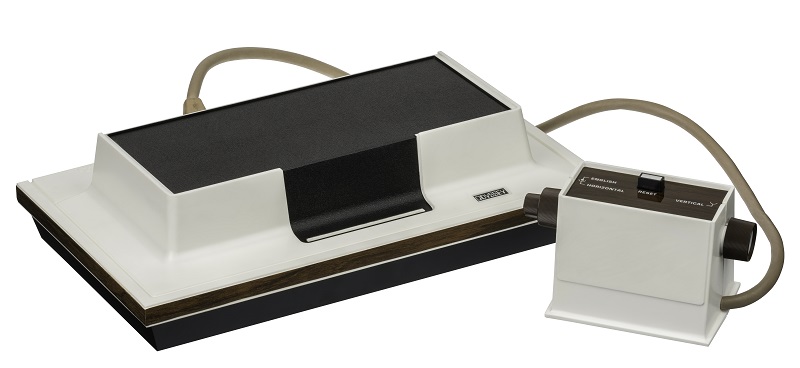
The Magnavox Odyssey was the first home video game console ever released. The idea for a video game console was developed by Ralph H. Baer and he spent several years developing a prototype with Bill Harrison and Bill Rusch. They showed their prototype to several manufacturers before Magnavox agreed to produce the console in 1971.
The Odyssey debuted in the Fall of 1972 and the U.S. version came with 12 games. Additional games were sold separately later in the year and in 1973. The games included with the Odyssey were: Table Tennis, Ski, Simon Says, Analogic, Hockey, Football, Cat and Mouse, Haunted House, Submarine, Roulette, and States. In addition to the separate game cards, Magnavox sold the first video game light gun as a peripheral controller.
4. Galaxy Game
Release Date: November 1971
Creator(s): Bill Pitts and Hugh Tuck
Country of Origin: USA
Genre(s): Space combat simulation
Mode(s): Multiplayer
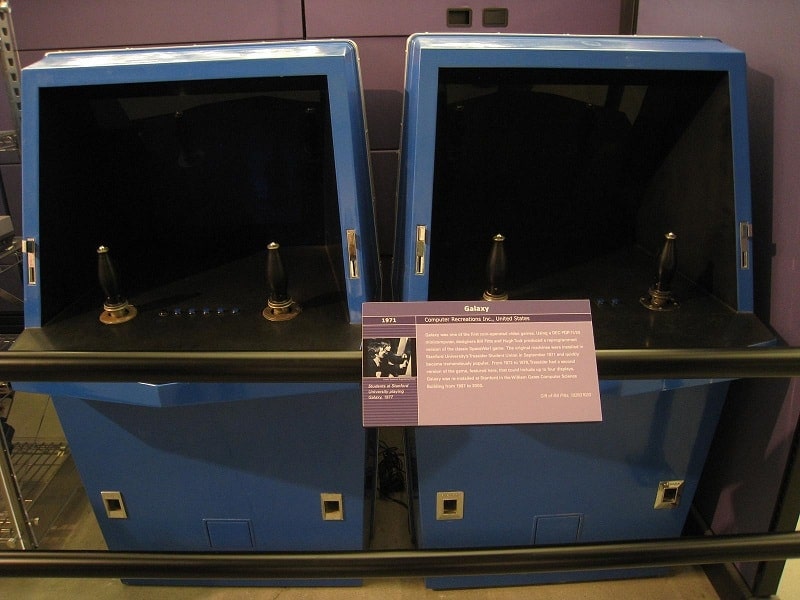
Galaxy Game is the lesser-known of the first two arcade games ever released, which were both based on the earlier computer game Spacewar! The game was developed by Bill Pitts and Hugh Tuck, at the student union building of Stanford University, around the same time that Syzygy Engineering (which would later become Atari) released its Spacewar!-based arcade game, Computer Space.
Pitts and Tuck spent $65,000 building two prototype consoles for Galaxy Game and installed them in the student union. The console charged players 10 cents per game or 25 cents for three and was popular among the university’s students.
Unfortunately, Pitts and Tuck were unable to turn Galaxy Game into a commercial success because they chose to focus on the game’s engineering rather than the business side of their idea. The second console is still operational and is currently a playable exhibit at the Computer History Museum.
3. Computer Space
Release Date: 1971
Creator(s): Nolan Bushnell and Ted Dabney in partnership as Syzygy Engineering
Country of Origin: USA
Genre(s): Space combat simulation
Mode(s): Single player and multiplayer
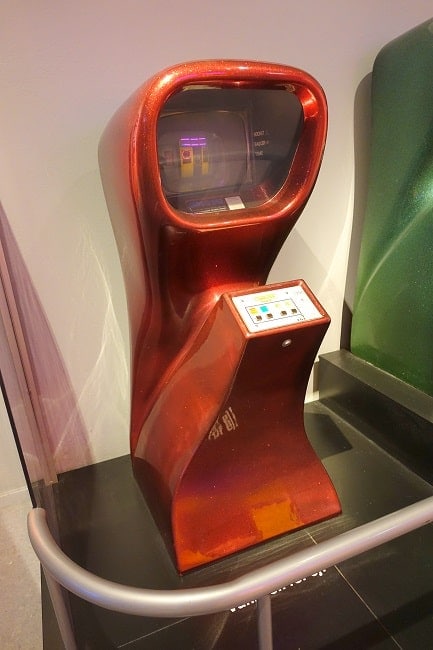
Computer Space was the first arcade video game as well as the first commercially available video game. It was one of a few video games directly based on the popular 1962 computer game Spacewar! Computer Space was designed by Nolan Bushnell and Ted Dabney in 1970 – 1971 and was intended to be a coin-operated version of Spacewar!
Bushnell and Dabney formed Syzygy Engineering to work on Computer Space. They partnered with Nutting Associates to build a prototype game cabinet for Computer Space. After the initial tests were successful, Nutting ordered 1,500 units of the game and Syzygy eventually sold all 1,500 games.
Although Computer Space was not the runaway hit that Syzygy hoped it would be, it marked the official beginning of the video game industry.
2. Spacewar!
Release Date: 1962
Creator(s): Steve Russell in collaboration with Martin Graetz and Wayne Wiitanen
Country of Origin: USA
Genre(s): Space Combat
Mode(s): Multiplayer
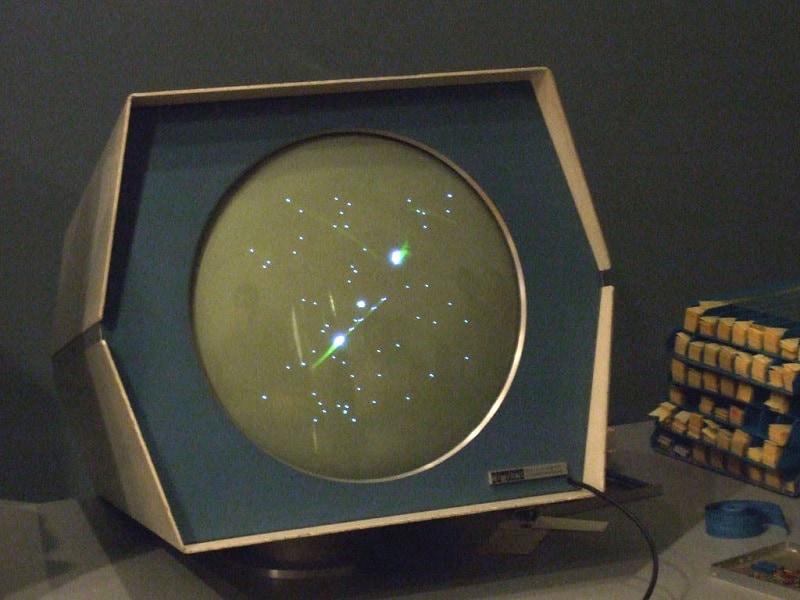
Of all the early games on this list, Spacewar! is probably one of the most influential. The game was highly popular among the small programming community of the 1960s and inspired the first commercial arcade games. Spacewar! is so important to video game history that it was the first entry of the game canon at the U.S. Library of Congress.
Spacewar! was developed by Steve Russell with help from Martin Graetz and Wayne Wiitanen. Russell also had help with the game’s programming from Bob Saunders and Steve Piner. The game was created for the newly installed DEC PDP-1 computer at the Massachusetts Institute of Technology (MIT). After the game was released, other students and employees from the universities in the area added on to the game, developing it further.
1. Tennis for Two
Release Date: October 18, 1958
Creator(s): William Higinbotham
Country of Origin: USA
Genre(s): Sports
Mode(s): Multiplayer
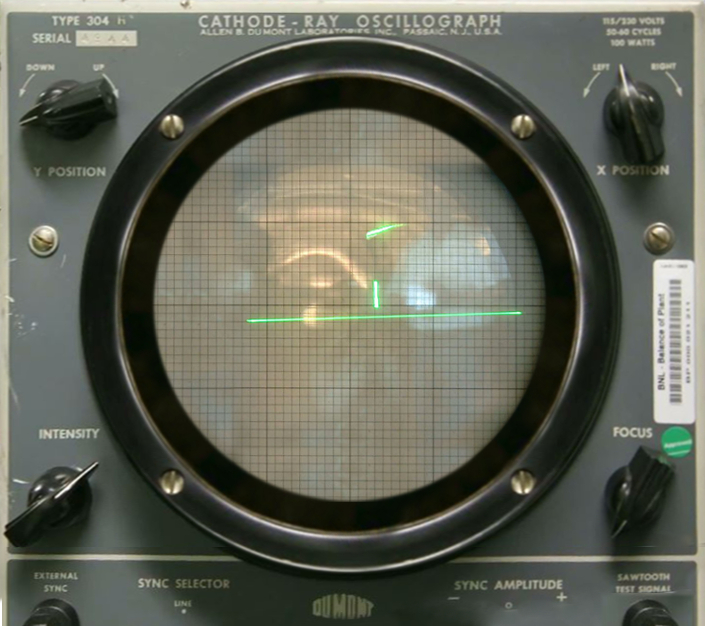
Although the answer defers depending on who you ask, Tennis for Two is widely considered the oldest video game in the world. It was the very first computer game created solely for entertainment rather than for academic research.
Tennis for Two was developed by American physicist William Higinbotham who worked in the Brookhaven National Laboratory as the head of the instrumentation division.
Higingbotham got the idea for Tennis for Two after reading the instruction manual for the Donner Model 30 analog computer. He discovered that the computer could calculate ballistic missile trajectories or a bouncing ball with wind resistance and Higingbotham used an oscilloscope to display the game.
OTHER POSTS YOU MAY BE INTERESTED IN
If you are reading this blog, odds are that you are a fan of games. Not only because this is a game design blog about the history of game design (I know you read the titles), but also because you would be hard pressed to find somebody that doesn’t enjoy games in one form or another. Games can teach lessons, they can bring people together and, most of all, they are fun!
Games today are a daily part of billions of people’s lives, and more new games are being created now than at any point in history. But today I am not going to be talking about these new games, but instead about some old games. Some VERY old games.
Some of these games are estimated to be over 5000 years old, and some may be even older than that. These games were played for thousands of years, by some of the most famous historical figures in all of history. And, although they may be very ancient, I believe that there is still a lot to learn from our modern board games’ ancient ancestors.
The House and the Senet
Let’s start our journey through history with the oldest known board game so far discovered – Senet. The oldest evidence of Senet dates it back to around 3100 BC, but the oldest intact Senet board ever discovered is from the Middle Kingdom of Egyptian history (so between 2050 and 1800 BC).
While we don’t know all of the rules of Senet, we can determine the basic rules from examining fragments of ancient texts. We know that players each had a number of pawns that they moved around the board by throwing dice, and the winner was the one who removed their pieces from the board first. We also know that the journey of the pawn around the Senet board was seen as a representation of the journey of the soul through the Egyptian afterlife. Senet was such a huge part of Egyptian culture and religion that images of people playing Senet can be found in the Book of the Dead, and several Senet boards have been found in Egpytian Pharaoh’s tombs.
The Amazing Race
Like many of the most ancient board games, Senet is a race game. Race games are a peculiar category of board games because they are both incredibly old and very widespread. Race games are generally pretty simple – both players have a number of pieces on the board, and try to get all of their pieces off the board before the other player. Usually players move based on rolling some form of dice, and in many cases there are ways to knock opponent’s pieces off of the board. The size and shape of the board can vary from game to game, as can the path required for the pieces to travel around and off the board.
Race games are so common in the ancient world that, according to David Parlett in The Oxford History of Games “all cultures that have games at all have race games”. These games have been found everywhere from Egypt to India to South America, and all these forms are surprisingly similar.
Other examples of ancient race games include:
- The Royal Game of Ur – An ancient Sumerian race game shown in the image at the top of the page. The oldest Ur board goes back to 2600 BC.
- Mehen – Another Egyptian race game played on a spiral shaped board. Named after a serpent god who’s name means “coiled one”.
- Patolli – A race game from the Americas that goes back to 200 AD and is one of the oldest know games in the Americas. It was played by the Toltecs, the Aztecs and the Mayans.
Fight AND Flight
Patolli is a particularly interesting example of these types of games because not only is it very geographically distant from all of the other known early race games, but it also is a sub-category of these games known as a running fight game. These types of games play very similarly to other race games, with two main exceptions. Firstly, your pieces do not leave the board at the end, but instead keep going around and around. Secondly, the goal is not to get all of your own pieces off the board, but to knock all of your opponent’s pieces off.
Patolli is also a great example of another common aspect of these ancient race games – gambling. These games usually relied upon dice or other randomly thrown objects (such as beans, sticks or cowry shells) to determine the movement of the pieces, and this made them prime suspects for gambling. Patolli exemplifies this by baking the gambling into the rules of the game. Both players have six pawns, and at the beginning of the game they have to bet six possessions. Every time a player lost a pawn, they also lost a personal possession!
A Race Through Time
While race games may have been some of the earliest games ever invented, they are also some of the longest lasting. Variations of these types of games have been played continually since they were first invented thousands of years ago, even up to modern day. One of the most influential categories of race games is the family known as the Table games, which are the ancestors of modern day Backgammon.
Table games get there name from the ancient greco-roman game Tabula, which means plank or board. Tabula, which dates back to roughly 470 AD, is generally considered to be the direct ancestor of modern Backgammon. It has almost the exact same rules as Backgammon, except that you roll 3 dice instead of 3 each turn and all the pieces start off of the board.
Backgammon, the modern version of these ancient table games, is now one of the most widely played games in the entire world. It has international competitions in countries all over the planet, and major tournament wins can have prizes of tens of thousands of dollars. Not bad for a game whose basic rules have been around for thousands of years!
Oh Chute!
Another modern board game with it’s roots in ancient race games is Chutes and Ladders. This game comes from the ancient Snakes and Ladders game which originated in India. Unlike the previous games I have mentioned so far, Snakes and Ladders is completely luck based, with no skill involved whatsoever. Instead of focusing on skill, the original purpose of this game was actually to teach morality lessons to children. Virtues are represented by the ladders, while vices were represented by the dangerous snakes.
Another game that is part of the same family of race games as Snakes and Ladders is Pachisi. Pachisi is the ancestor of the modern games Parcheesi and Ludo, and is one of the first known race games to allow team play. It also was played on a cruciform board very similar to that used for Patolli, played halfway around the world.
Modern Lessons
Even after all this time, new versions of the ancient race game formula are still being made and played. A more recent example, which takes full advantage of the mechanics of knocking opponent’s pieces off the board is the Hasbro game Sorry!. In Sorry!, up to four players compete to move their pieces from a starting space, around the entire board, and finally to the ending position, all while trying to knock opponent’s pieces back to start.
The basic gameplay of Sorry! is very similar to Pacheesi, but it makes a few modifications to the ancient formula. Firstly, it uses cards to control player movement rather than dice. This allows more interesting movement options, such as moving backwards or switching places with opponent’s pieces.
Another (relatively) recent game that shook up the race game formula is Hare and Tortoise. Unlike Sorry!, Hare and Tortoise focused on minimizing the role of luck in the game, instead making it almost entirely strategic. To do so, Hare and Tortoise removed the traditional movement mechanic of rolling dice to move. Instead, Hare and Tortoise allows players to pay the in-game currency, carrots, to move forwards squares. The price of moving increases based on the number of squares moved, which creates a much more strategic game than the more random race games of the past.
Racing to the Future
Despite the innovations of modern race games like Sorry! and Hare and Tortoise, there is still lots of design space to be mined in this genre of game. One area that is full of interesting design space is the movement mechanics of the game. While Sorry! introduced the idea of cards that control the movement of the pieces, I believe that they only scratched the surface of that potential. The idea of allowing players to pay currency to control their movements is also full of possibilities.
Other areas that are ripe for exploration include the board itself, and the pawns that are used to play. While race game boards have been found in numerous sizes and shapes throughout time and space, the spaces have generally been pretty interchangeable (with the exception of maybe a few special squares). One way to add variety to this ancient genre is by having more variety of terrain to travel over. You could even use modern board technology to allow players to build the board as they played – racing to the end of a track that gets completed as the players move along it.
Another option is to have pawns that all have unique movement patterns or other abilities. Instead of blank faceless pieces, each player could have a variety of tokens, each one distinct from one another that must all reach the end of the board. Perhaps the cheetah token is able to move twice as far as the other pieces, which the Gorilla is able to knock off any opponent’s pieces from the board as it passes them.
Until Next Week
That’s all I have for this week. I hope you enjoyed my article on the most ancient genre of games in history! If you did, please subscribe to the blog here on WordPress, Facebook, or Twitter so you will always know when I post a new article. If you didn’t, let me know what I could do to improve in the future! And join me next week, when I will be talking about…well, I’m not sure yet. Feel free to give me your article suggestions in the comments below!
Community Questions of the Week
- What is your favorite race game? Are there any major race games that I missed? And are there any more recent race games that you have been enjoying?
- Do you enjoy these more history oriented articles? If so, what genre of games would you like me to tackle next?
In just the last few years, board games have been steadily skyrocketing in popularity. The trend can’t be denied and is evidenced by a quick Google search or a glance at the proliferation of board game cafes worldwide. In 2012, The Guardian claimed that we are now living in “A Golden Age of Boardgames,” citing an annual growth in the market of over 40% each year.
Widespread interest in board gaming and the surrounding culture can surely be credited to the internet, which has empowered fan pages, mass market sales, and even crowdfunded creations. This is apparent in the statistics of Kickstarter, where board games are one of the most-funded categories of crowdfunded projects. YouTube is complicit in this “board game renaissance,” with series like Will Wheaton’s Table Top sparking a renewed enthusiasm in gaming.
The recent rise in the popularity of board games — and tabletop gaming in general — got us thinking about the origins of this leisure activity.
- What was the first board game?
- When did people start playing board games?
- What kinds of games have people played through the ages (and around the world)?
As you’ll quickly learn, I am a huge history nerd and love looking at the historical precedents of ideas. Welcome to my history/board game nerdgasm. I hope you have fun with this exploratory look at the history of board games — and hopefully learn something too!
The Stone Age Had Stones, So Probably Board Games Too
The board game market today is filled with a wide variety of games: strategy, roleplaying, chance, trivia, educational, abstract, etc. The list goes on and on. The increasingly popular hobby of playing games is not a new phenomenon. People have been playing board games since the Stone Age (or perhaps earlier) as humans started living together in groups, the natural desire for entertainment and competition inevitably produced the first games of skill, strategy, and chance.
The pastime goes back millennia and has been shaped by culture and tradition, evolving through the ages and appearing in many manifestations throughout human history. As you gather around your table for your weekly gaming session with friends or family, let’s take a quick look back into history to see where some of our favorite games have their origins.
Prehistoric Board Games? Thanks, Archaeology!
Games have existed since before written history! Do you know that dice was very first game ever played? Dice is a very simple game, with a variety of rules and variations, that could be made of wood, bones, or stones.

Sophocles claimed that Palamedes invented dice in about 1400BC and, sure enough, cubical stones and clay dice have been found from this period with numbers on their faces. In truth, dice were developed independently by many ancient cultures around the world — and long before that!

Archeologists found board games dating as far back as the Stone Age. A series of 49 small carved painted stones were found at the 5,000-year-old Başur Höyük burial mound in southeast Turkey. These are the earliest gaming pieces ever found. Similar pieces have been found in Syria and Iraq and to point to board games originating in the Fertile Crescent.
In case you didn’t know, the Fertile Crescent, also known as “The Cradle of Civilization,” is located in the Middle East where the Tigris, Euphrates, and Nile rivers created the optimum conditions in which the earliest foundations of cities, learning, and development were able to flourish.
Other early dice games were created by painting a single side of flat sticks. These sticks would be tossed in unison, the painted sides showing were counted, constituting the player’s “roll”. Mesopotamian dice were made from a variety of materials, including carved knuckle bones, wood, painted stones, and turtle shells.
Due to the scarcity of historical documentation, it’s hard to say which games were truly the first to be played, but archaeology has turned up clues that can give us a general idea of the earliest games in human history.
Board Gaming in Ancient Times: I guess some people had time on their hands
Backgammon originated in ancient Persia over 5,000 years ago. Chess, Pachisi, and Chaupar originated in India. Go and Liubo originated in China. Shax originated in Somalia. Bao (mancala game) is still played throughout eastern Africa. Patolli originated in Mesoamerica played by the ancient Aztec and The Royal Game of Ur was found in the Royal Tombs of Ur, dating to Mesopotamia around 4,600 years ago.

The Royal Game of Ur

The ancient Royal Game Of Ur is probably the oldest board game (with a board) in the world. This game is at least 4,500 years old and was played in the Middle East by the Sumerians. It is a basic race game (similar to Backgammon) with very simple rules, but perhaps unsurprisingly, can have extremely complex strategic mechanics.
British Museum historian, Irving Finkle, spent years researching this enigmatic game and was finally able to decipher the rules. It can be played accurately now and looks like quite a lot of fun! Check out the British Museum official playthrough here:
Senet (‘the game of passing’)

Egyptians played a board game called Senet (Senat or Sen’t), which was an ancestor of Backgammon. It is not known how the game was played exactly but popular conjecture has deduced some generic rules to allow us, modern folks, to give it a try.
Senet is a racing game, similar to the Royal Game of Ur and Backgammon. The board was divided into squares with counters. Players would throw sticks rather than dice. Senet was pictured in a fresco found in Merknera’s tomb (3300–2700 BC).
Mehen (‘the game of the snake’)

Also from predynastic Egypt is a game called Mehen. The first evidence of the game Mehen is as old as 3,000 BC. It was very popular during the Old Kingdom and remained in popular use throughout many dynasties. Mehen was played on a board that looks like a snail shell at first glance but actually represents a snake. The most detailed playing pieces were shaped like lions. The set of pieces included three to six game bits and a few small marbles.
Snakes and Ladders (200BC): An Indian Game of Good & Evil
Snakes and Ladders originated in India as a morality-based game, where the progression up the board was to teach children about good and evil, with climbing up ladders representing good and sliding down snakes representing evil.

During the British occupation of India, the game found its way to the West where it was modified and rebranded as “Chutes and Ladders” in the United States in 1943 by Milton Bradley.
Mah Jongg (‘sparrows’ – thought to be named for Confucious’ love of birds)
Mah Jongg or (Mahjong) is another ancient game that continues to be played today, despite being about 4000 years old! As a closely guarded secret of the Chinese aristocracy, it only emerged in popularity in the West in the 20th century.

The current version of the game – a four-player game played with tiles on a board – came from China in the 1920s and has many similarities with the card game Rummy. Mahjong is usually played by four people, in which tiles bearing various designs are drawn and discarded until one player has an entire hand of winning combinations.
When in Rome… play as the Romans play? – Backgammon Roman Style

The Romans played a game called Ludus Duodecim Scriptorum (‘the Twelve Line game’ or the ‘game of twelve markings’), which was similar to modern Backgammon. The Roman Emperor Claudius was said to be a very avid player of Tabula, a predecessor to the game of Backgammon.
Although we know the Romans were fond of this game, it predates even the Roman Republic by about 1500 years.
Ludus Latrunculorum (‘the game of brigands’)
Recently, archaeologists in Colchester in the United Kingdom unearthed a remarkably well-preserved board game called Latruncui or Ludus Latrunculorum (‘the game of brigands’). It has references as early as Homer’s time (12th century BC) and is said to resemble chess.
This game had already been discovered in pieces and parts throughout the Roman Empire (and in excerpts from Latin literature) but never in full or set up for play as it was found in Colchester.
They excavated the complete game of 12×10 squares with 24 glass pieces, 12 of white and 12 of blue. Due to limited sources, reconstruction of the game’s rules is difficult but is generally accepted to be a game of military tactics. Game historians are still arguing about the mechanism of play in this archaic ancestor of strategic games.

Examples of Ancient Board Games
Merriment in the Medieval Period: If people were playing board games, these were NOT the “Dark Ages”

In the early medieval period, wealthy Saxon nobles played games similar to our concept of Chess. Historians are not certain where or when Chess was invented, but popular conjecture places its invention in India in the 6th or 7th century AD (or possibly earlier). The game’s popularity eventually led to it being played in Europe by the 10th century.
Hnefatafl (‘king’s table’): The Game of the Vikings

The Vikings played a board game called Hnefatafl (‘king’s table’). Hnefatafl and the many variants of Tafl that go by different names is a game where one player’s objective is to guide the white king to an escape square, while black’s is to surround and capture him (black plays without a king). The pieces move orthogonally, like rooks in chess, and capture is by surrounding a piece on two opposite sides.
It is, in essence, an abstract game that depicts a very specific war scenario with unequal sides. It is very similar to chess, as an abstract military strategy game, but has been criticized for its slow-moving offense and lopsided power between the participants.
Mancala (‘to move’): More fun than watching the crops grow
Evidence of Mancala games have been found by archaeologists in Aksumite Ethiopia in Matara (now in Eritrea) and Yeha (in Ethiopia), dating back to between 500 and 700 AD. The word mancala is derived from the Arabic word naqala, which means “to move.” It is thought that Mancala was originally played with seeds or stones and holes dug into the dirt, which makes sense when you think of how the placement of the tokens into the holes mimics the act of sowing seeds into the earth.

In agrarian civilizations, it is reasonable to assume that many games stemmed from what people did most often. Whether, farming, warfare, or hunting, it goes to show that people play what they know! Many variations of the game exist, and evidence of Mancala boards have been found in Egyptian pyramids, Saharan ruins, and Neolithic settlements in modern-day Kenya.
By the way, a good example of a modern ‘mancala’ game is Five Tribes. (Awesome game, definitely worth adding to your collection.)
Nine Men’s Morris: Shakespeare informs us that it was played on the ground
Archaeology has been extremely helpful in enlightening us about the board games of the past. Even as recently as August 2018, archaeologists discovered a medieval board game in a secret castle crypt in Russia! A hidden chamber in Vyborg Castle, which dates back to the 13th century, contained a brick that had a grid-like pattern etched into its surface, prior to being baked.

The game played on the brick is actually very well known, and it dates back to the Roman Empire. It goes by several names, including Mill, Merrills, and Cowboy Checkers, and it’s very reminiscent of Nine Men’s Morris—a game, which like Checkers and Chess, involves intersecting squares and small pieces, called “men,” that are engaged in combat.
In Tudor England, the upper classes played board games like Chess and Backgammon (a backgammon set was found on the wreck of the Mary Rose, identical to the modern version).
Fox & Geese
The Tudors were also known to have played Checkers (Draughts) and Fox & Geese. Possibly a relative of Hnefatafl, Fox & Geese dates back to the 14th century in Britain and is a simple strategy game for two players, where the fox attempts to eliminate the geese, while they try to trap him.

Fox & Geese is played by one player moving the fox while the other controls the gaggle of geese. The fox can jump over and capture the geese one at a time so long as there is a vacant space beyond. The geese try to push the fox into a corner while avoiding being eaten. The fox wins if he captures all the geese; the geese if they can trap the fox.
The game remained popular into the 17th century when new rules to the game were introduced, making it popular during the English Civil War. Later, more militarily-oriented games evolving from Fox & Geese appeared during the Napoleonic Wars of the 18th century.
Pachisi / Chaupar / Ludo
Pachisi (Parcheesi, Parchisi, Parchisi, Parchesi; also known as Twenty-Five) is the National Game of India. The name comes from the Indian word “pacis” which means twenty-five, the highest score you could throw in the game.
The Indian Emperor Akbar I of the Mogul Empire in the 16th century is thought to have played Chaupar with human pieces on great courts constructed of inlaid marble. He would sit on a platform in the center of the court and throw the cowry shells. On the red and white squares around him, 16 women from the harem, dressed in corresponding colors, would move around according to his directions.
Pachisi boards as played in the street are often constructed of cloth, 6 cowry shells are thrown to determine the moves and the counters are made of wood in a beehive shape. Pachisi is a ‘Cross and Circle’ game, variations of which appear all over the world.

The origins of Pachisi and Chaupar are lost in time but uncertain evidence indicates that forms of the game were in existence in the Indian region from at least the 4th century AD. Both have hardly changed since Emperor Akbar played.
Game of the Goose
Game of the Goose holds the record for being the first modern commercial board game. It is connected with ancient spiral race games like the Egyptian Mehen, and to artifacts like the Phaistos Disc of the Minoans.

The game is a simple race game governed only by the throw of dice – the game pieces (often in the shape of Geese) move from the outside of the spiral towards the middle. Invented in Italy as early as 1500, Game of the Goose (‘Gioco dell’Oca’) was given by Francesco de Medici (1574-1587) as a present to King Phillip of Spain.
Though more a gambling game of pure amusement, adaptations of the Game of the Goose appeared with an educational purpose, teaching the players about geography, history, and morals. Its influence lasted well into the 20th century when similar race games were tied in with popular culture and current events.
New World, New Games: Patolli

Games were not limited to the Old World though. There is evidence for games being a popular pastime (at least among the nobles and elites) in the New World too! For example, there are drawings in the Codex Magliabecchiano of the Aztec god Macuilxochitl overseeing a game known as Patolli.
Patolli was played by the Aztecs at the time of the Spanish arrival in Mexico. It was a gambling game and is recorded as having been played by nobles for high stakes such as precious stones and gold beads.
Patolli (or patole) was a racing game on a cross-shaped board. Pieces raced around the board according to the throws of five beans, which were marked on one side and plain on the other. Complete rules for the game have not survived, but board game historian R. C. Bell proposed a plausible reconstruction for them.
Examples of Medieval Board Games
Language FTW: A Linguistic Look at the History of Board Games
The English word for “game” has not changed much in the centuries of linguistic development that the Indoeuropean languages have undergone. Even looking back as far as the third century, the word in Gothic, “gamen,” is still recognizable to the modern reader.

Board Games in the Enlightenment and Beyond (17th-19th Centuries)
Traditional games such as Chess, Checkers, Backgammon, and Dominoes continued in popularity throughout the European Renaissance and Enlightenment periods. With the invention of the printing press, new varieties of games emerged, like games with themes and subjects.
Agon

Agon (or Queen’s Guard, Queen’s Guards, Royal Guards) is a strategy game for two players, played on a 6×6×6 hexagonal game board.
Agon may be the oldest board game played on a hexagonally-celled board, first appearing in France as early as the late eighteenth century. The game reached its greatest popularity a century later when the Victorians embraced it for its blend of simple rules and complex strategy.
Agon
Buy on Amazon
We earn a commission if you make a purchase, at no additional cost to you.
04/06/2023 07:27 am GMT
Conspirateurs

Conspirateurs (Conspirators) is a two- or four-player strategy board game probably invented in 18th century France. It perhaps dates after 1789 from the French Revolutionary Wars, “a period of feverish political activity with factions conspiring against each other”.
Conspirateurs resembles Halma, Ugolki, Chinese Checkers, and Salta in that pieces jump without capturing over friendly or enemy pieces to help race to their destinations.
Shogi (Japanese Chess)
Ko Shogi (‘broad chess’) is a large-board variant of shogi or Japanese chess. The game dates back to the turn of the 18th century and is based on xiangqi and go as well as shogi. Credit for its invention has been given to Confucian scholar Ogyū Sorai.
Tori Shogo (‘bird chess’) is a variant of shogi (Japanese chess), which was invented by Toyota Genryu in 1799 despite being traditionally attributed to his master Ōhashi Sōei. It was first published in 1828.

The game is played on a 7×7 board and uses the drop rule; it is the only traditional shogi variant to do so. This is one of the more popular shogi variants whose popularity has continued to the modern day! There were even tournaments in London and Royston in the 1990s and early 2000s.
Halma and Ugolki

Halma (from the Greek word meaning “jump”) is a strategy board game invented in 1883 by George Howard Monks, a US thoracic surgeon at Harvard Medical School.
The game board is checkered and divided into 16×16 squares. Pieces may be small checkers or counters, or wooden or plastic cones, or men resembling small chess pawns. Piece colors are typically black and white for two-player games, and various colors or other distinctions in games for four players.
Ugolki is a variation of Halma that is typically played on an 8×8 grid board with 16 game pieces per player. It is said to have been invented in Europe in the late 18th century.
Due to its simplicity of rules and complexity of strategy, it’s clear that chess has lasted the test of time. London hosted the first international chess tournament in 1851.
Examples of Enlightenment Board Games
Board Games in the Twentieth Century: A bit closer to home
The 20th century is when we see the invention of more recognizable games such as Scrabble, Risk, Trivial Pursuit, the Game of Life, Cluedo (Clue), Sorry, Civilization, Candyland, and Pictionary. These games were probably a staple in your home growing up and most likely the cause of your love (or extreme hatred) of board games today.
The Origins of Monopoly
One of the most well-known board games was invented in America in 1903 by a woman named Lizzie Magie. Called The Landlord’s Game, and was played on a square board that had various ‘properties’ around the outside that players could buy for differing amounts. It also had a jail, railroads, utilities… sound familiar?

Lizzie wanted to highlight how rent charges made property owners rich while keeping the tenants poor and preparing children for the unfairness of adult life. LOL. So now we know why Monopoly is the root of all domestic strife.
Conclusion: The game is afoot!
Board gaming is now a full-fledged industry with professional gamers, web shows, RPG web series, YouTube tutorials and playthroughs, indie games making history with record-breaking crowdfunding, and festivals dedicated solely to board games.
The market is constantly growing with companies specializing in board game accessories, shelving, storage, protective cases, mobile app scoring systems, and musical scores!
Not bad when you consider we only had sticks, stones, and a few knucklebones around 7,000 years ago.
Maybe it’s just me, but there’s something deeply comforting about the continuities of the human experience, especially positive ones, that show humanity at its most accessible. Our ancient ancestors may have differed from us in many ways, but we still have the commonality of board gaming that links us, helping us understand the people of the past.
We are all part of the same community, through the ages, who have enjoyed board games, still play variations of ancient games, and will continue to compete, strategize, socialize, and cooperate in the future, through the wonderful, adaptable, and timeless medium of board games.
What do you think? Do you know the history of your favorite board game? Which games would you like to try? Drop us a comment below and happy gaming!
Looking for games to play? Check out our video below:
Kendra has always been a hardcore fantasy nerd. Growing up in the worlds of Tolkien, Sanderson, Jordan, and Abercrombie, DnD & board games just came naturally. She and her husband, Bryan, started GameCows.com in 2018 as a fun passion project that just took over their lives. An avid board gamer since childhood and chronic DnD chronicler for more than two decades, she loves to play, write, travel, and learn dead languages.
Board and dice games have been a popular activity across almost all human societies for thousands of years — in fact, they are so ancient that it’s unknown which game is the oldest or the original, if there is one.
Even the ancient Greeks played their share of board games; this illustration on a Greek amphora from the sixth century B.C. (now exhibited at the Vatican Museums in Rome) shows the Greek heroes Achilles and Ajax playing a dice game between battles at the siege of Troy.
Here’s a look at some of the most interesting ancient board and dice games, ranging from several centuries to many thousands of years old.
Viking chess
In August 2018, archaeologists with the Book of Deer Project in Scotland unearthed a game board in what they think was a medieval monastery.
The researchers are looking for signs that the buried building was inhabited by monks who wrote the Book of Deer, a 10th-century illuminated manuscript of the Christian gospels in Latin that also contains the oldest surviving examples of Scottish Gaelic writing.
The ancient game board was scratched into a circular stone that was found above buried layers in the building dated to the seventh and eighth Centuries.
Historians think it was used to play hnefatafl, a Norse strategy game sometimes called Viking chess, although it is not actually related to chess. The game pits a king and 12 defenders in the center against 24 attackers arranged around the edges of the board.
Medieval Mill Game
In July 2018, archaeologists found a secret chamber at the bottom of a spiral staircase in Vyborg Castle, near Russia’s border with Finland, which dates from the 13th century.
Among the objects found in the secret chamber was this game board, inscribed into the surface of a clay brick, that researchers think was used to play a medieval version of the board game known as «nine-man morris» or «mill.»
The game dates back at least to the Roman Empire and was popular during the medieval period in Europe. To play, two players set up playing pieces on the intersections of the lines on the board and took turns to move. If a player built a «mill» of three pieces in a row, they were awarded with one of their opponent’s pieces.
Lewis Chessmen
The game of chess itself has been played in Europe for many centuries — and the most famous chess set in archaeology may be the Lewis chessmen, which were found buried beside a beach on the island of Lewis in 1831.
It’s not known just how they came to be there, but archaeologists think the game pieces were made in the 12th or 13th centuries, when Lewis was part of the Kingdom of Norway — and that they may have been buried for safekeeping by a traveling merchant.
The 93 playing pieces, thought to come from four complete chess sets, are carved from walrus tusks and whales’ teeth. The largest pieces portray medieval kings, queens, churchmen (bishops), knights and warders (rooks), while the pawns are represented by carved standing stones.
Norwegian Knight
The game of chess is thought to have been introduced to Europe from the Middle East around the 10th century.
Several archaeological finds attest to the popularity of the game in medieval Europe, including this 800-year-old chess piece from Norway, which was found in 2017 during an excavation of a 13th-century house in the town of Tønsberg.
The piece is thought to represent a knight from the game of chess, which was known at the time by its Persian name shatranj. Archaeologists say it is carved from antler in an «Arabic» style, although they think it was probably made somewhere in Europe.
Game of Go
China’s most famous board game is Go, which is now played around the world. It’s thought to have been developed in China between 2,500 and 4,000 years ago, and may be one of the oldest games still played in its original form.
One story says the game was invented by the legendary Emperor Yao, said to rule from 2356 to 2255 B.C., to teach discipline to his son; another theory suggests that the game developed from a type of magical divination, with the black and white pieces representing the spiritual concepts of Yin and Yang.
Go was introduced to Japan in the eighth century A.D. and became the favorite game of aristocrats, who sponsored top players against other noble clans. Professional Go players in Japan today compete in tournaments for prizes worth hundreds of thousands of dollars.
Greek and Roman Dice
The Romans adopted dice games from the Greeks — collections like that of the British Museum contain many ancient dice from both regions and throughout the Roman Empire. A Roman-era «dice tower» for throwing dice was also found in Germany in 1985.
Ancient dice could be carved from stone, crystal, bone, antler or ivory, and while the cubical dice familiar today were common, they weren’t the only shape that was used — several polyhedral dice have been found by archaeologists, including 20-sided dice engraved with Greek characters from Ptolemaic Egypt.
Archaeologists don’t agree that such dice were always used for games — instead, they may have been used for divination, with the characters or words on each face of the die representing an ancient god who might assist the dice-thrower.
Chinese Dice Game
Dice were also used in ancient China — a mysterious game featuring an unusual 14-sided die was found in a 2,300-year-old tomb near Qingzhou City in 2015.
The die, made from animal tooth, was found with 21 rectangular game pieces with numbers painted on them, and a broken tile that was once part of a game board decorated with «two eyes … surrounded by cloud-and-thunder patterns.”
Archaeologists think the die, pieces and board were used to play an ancient board game named «bo» or «liubo» — but the game was last popular in China around 1,500 years ago, and today nobody knows the rules.
Israel Mancala Boards
In July 2018, archaeologists announced they had found a «games room» in their excavations of a Roman-era pottery workshop from the second century A.D. near the town of Gedera in central Israel.
Among the finds were several boards for the ancient game of mancala, consisting of rows of pits carved into stone benches, and a larger mancala game board carved into a separate stone.
The room seems to have served as a relaxation center for the pottery workers — a «spa» of 20 baths and a set of glass cups and bowls for drinking and eating were also found at the site.
Mancala is still a popular game today, especially in parts of Africa and Asia. It’s played by moving counters, marbles or seeds among the pits of the game board, capturing an opponent’s pieces, and moving pieces off the board to win the game.
India’s Chaturanga
Chaturanga is the Indian forerunner of the Persian game shatranj, which became chess in the West. It was invented during the Gupta Empire of northern and eastern India around the sixth century A.D., although what may be «proto-chess» boards have been found in the Indus Valley region and dated to more than 3,000 years ago.
Chaturanga pieces included generals, elephants and chariots, which are thought to correspond to the modern chess pieces of queens, bishops and rooks.
The name chaturanga comes from the ancient language of Sanskrit, meaning «four-armed» — a term used to describe the traditional divisions of an army. The image (shown here) from an Indian manuscript from the Gupta period, shows the Hindu gods Krishna and Radha playing Chaturanga on an 8-by-8 board of squares. The boards were not checkered like chess boards today, but they were marked in the corners and in the center squares — no one knows the reason.
Pachisi and Chaupar
The Indian game of pachisi is still played today, and a version of it is played in the West as the game of ludo. It’s thought to have developed from earlier board games around the fourth century A.D., and is now considered India’s national game.
An illustration (shown) from an 18th Mughal painting shows the wives of the ruler of Lucknow playing chaupar, a game closely related to pachisi that uses the same cross-shaped board.
Traditionally, players in pachisi and chaupar moved their pieces around the board according to a throw of six or seven cowrie shells, which could fall with the opening upward or downward — dice are often used today.
Gyan Chaupar
The Indian game of gyan chaupar is the original «snakes and ladders» — versions of it date from the 10th century A.D.
It was supposed to teach morality, with players moving from the lower levels of spiritual bondage to the higher, heavenly levels of enlightenment to win the game.
During the British rule of India, the game was introduced to the West along with other games that had similar moral meanings; eventually, versions of the game were produced without the moral messaging.
A gyan chaupar board and game pieces from the 18th century was on show in the National Museum of India in 2018 (shown).
Mesoamerican Patole
Versions of the game patole or patolli were played throughout pre-Columbian America by several different cultures at different times, including the ancient Toltecs and Mayans.
This illustration from an Aztec codex of the 16th century shows Macuilxōchitl — the god of art, beauty, dance, flowers and games — watching a game of patole being played. The Spanish conquistadors apparently reported that the last Aztec king Montezuma enjoyed watching the game being played at his court.
Patole players would bet items of great value on the outcomes of their games — the idea was to use throws of beans or dice to move all their game pieces around the cross-shaped board and into specially marked squares to win.
The shape of the board has led some anthropologists to speculate that the Mesoamerican game is related to the Indian game of pachisi, which would imply some sort of pre-Columbian contact between the two regions. But other researchers have dismissed any such likeness.
Hounds and Jackals
Boards and pieces for the game now known as «hounds and jackals» have been found at several ancient Egyptian archeological sites, with the earliest examples dating from around 2000 B.C.
American archaeologist Walter Crist has also found a version of the same game cut into the rocks of a Bronze Age shelter in Azerbaijan.
This photograph shows a game set from the 18th century B.C., found in the tomb of the pharaoh Amenemhat IV in Thebes by the British archaeologist Howard Carter in 1910. The game can now be seen at the Metropolitan Museum of Art in New York.
The game board has two sets of 29 holes, and each player has 10 sticks that fit in the holes, decorated with either dog heads or jackal heads. The aim of the game is thought to have been to move a player’s pieces from one end of the board to another, while capturing an opponent’s pieces on the way.
Egyptian Senet
The ancient Egyptian game of senet is one of the world’s oldest board games — pieces of boards thought to have been used for senet have been found in tombs of Egypt’s First Dynasty of kings, dating to earlier than 3000 B.C.
A painting (shown) on the wall of the 12th century B.C. tomb of the Egyptian queen Nefertari shows her seated at a table playing the game, which can be recognized by the shape of the pieces.
Senet game sets have also been found at other ancient sites in the Middle East, probably as a result of trade with Egypt.
Although the original rules of senet are not known, some modern reconstructions are based on ancient writings about the game. It’s thought the aim was to move a player’s pieces according to the numbers given by «throw sticks» — a type of dice — while avoiding certain unlucky squares, represented by symbols on the game board.
Egyptian Mehen
The word mehen, meaning «the coiled one,» was both the name of an ancient Egyptian snake-god and of a board game played by Egyptians before the Old Kingdom period, before 2150 B.C.
The relationship between the god and the game is unclear, but the game of mehen was very popular and appears on tomb paintings from the time.
The coiled game boards have been found with six carved game pieces shaped like lions, and with six sets of small balls or marbles that may have been the «prey» of the lion pieces. The ancient rules of the game are unknown, although there are several modern reconstructions.
Royal Game of Ur
A single board for what’s now known as the Royal Game of Ur was unearthed early in the 20th century during excavations of a Sumerian tomb in the Royal Cemetery of Ur, in modern-day Iraq — which means it dates from at least 3100 B.C. Other game boards have since been found in North Africa, the Middle East and Asia.
Unusually, at least one version of the ancient rules is well known because they were preserved on a Babylonian clay tablet written by a scribe in the second century A.D.
The object of the game was to move all of a player’s pieces along the board before an opponent could do so. Four-sided pyramid-shaped dice were used to determine how the pieces could move in the game.
The ancient game is now being revived as a community pastime at the University of Raparin, in the Kurdistan region of Iraq.
Tom Metcalfe is a freelance journalist and regular Live Science contributor who is based in London in the United Kingdom. Tom writes mainly about science, space, archaeology, the Earth and the oceans. He has also written for the BBC, NBC News, National Geographic, Scientific American, Air & Space, and many others.
Most Popular
The delightful hobby of playing games isn’t a modern invention. While people in ancient times didn’t have Pokemon Go to entertain themselves, they still spent hours of fun games both inside and outside of their households.
It is unknown who the innovators were who first started to play games. Perhaps the earliest games were created in prehistoric times, when gaming tools would have been made of wood or bone. It is impossible to conclude which is the oldest game in the world, but discoveries made at archaeological sites in Turkey, Syria, and Iraq have unearthed an ancient game that is still a mystery for archaeologists. It seems that games quickly became a very attractive source of entertainment, a valuable diplomatic gift, a portrayal of wealth, and desired artifacts for the afterlife (perhaps with a perception of extra leisure time following death?)
A screen painting depicting people of the Ming Dynasty playing Go, by Kanō Eitoku. ( Public Domain )
Ancient Games of Prestige
One can only imagine what kind of games normal people could play in the distant past and what were the usual ways to entertain children. Ancient resources describe some games, but it is unknown how many of them were available to everyone. Certainly, the number of people allowed to play some games increased over time, but it is unknown how many games were accessible to all in the earliest years.
- Gambling in Ancient Civilizations
- Before They Were Divination Tools, Tarot Cards Were Playing Cards
Archaeological evidence suggest that ancient Egyptians enjoyed board games. Even Queen Nefertari, the famous wife of Ramesses II, was portrayed in her tomb while playing a board game called Senet. The second most famous game in ancient Egypt was Mehen. It is unknown which game is older, however, material evidence presents Senet as the first.
The Egyptian game Senet. Public Domain
The first evidence of the game Mehen is as old as 3,000 BC. It was very popular during the Old Kingdom, and remained prevalent at least until the Third Intermediate Period. Mehen was played on a board which looks like a snail shell at first glance, but actually represents a snake. The most detailed playing pieces were shaped like lions. The set of pieces included about three to six game bits and a few small marbles.
Mehen game with gamestones, from Abydos, Egypt. ( CC BY 3.0 )
On the other hand, Senet was known in the Pre-Dynastic period. The game was played on a grid of 30 squares arranged in three rows. The exact rules are unknown, but it seems that it was played with two sets of pawns. The game was played as a way to contact deities. It was believed that the successful player was protected by gods like Ra, Thoth, and Osiris. The connection to the last god explains somewhat why this game was often placed within tombs. Senet was so popular that it was even referred to in the Book of the Dead.
A game box and pieces for playing the game of Senet found within the intact KV62 tomb of King Tutankhamun. ( CC BY-SA 2.0 )
The famous Royal Game of Ur differed from ancient Egyptian board games as it was also available to normal people. The game is about 5,000-years-old, and is one of the enlightening artifacts that exposes details on the mentality of the ancient people of Ur. It is a racing game based on a set of knucklebone dice. This game spread to neighboring countries and was also played by Egyptians.
The Royal Game of Ur. ( CC0)
Druidic Fun and Medieval Stones
Another very interesting game was one discovered in a tomb dated to the 1st century AD. It belonged to a person known as the Druid of Colchester. The discovery of this artifact was a lucky surprise because it seems the game is complete. An article titled Your Move Doctor! describes the game board and other finds the Colchester archaeologists made in Stanway:
»Delicate excavation gradually uncovered the fragile remains of the game board with the pieces still more or less as they had been left 2,000 years ago. The wooden board had rotted away almost entirely, except for its corners where close contact with its L-shaped metal corner pieces resulted in the survival of some wood. The gaming counters must have dropped by around 15 mm (the thickness of the board) as the wood decayed, and there seems to have been some slight sideways movement of the pieces, presumably because the board was jolted at some point in the burial process. But by and large, there had been surprisingly little movement of the pieces, and this has allowed us to guess at how the board was laid out. What seems to have happened is this. A roughly square pit was dug for the grave. The bottom was ledged so that one end was slightly deeper than the rest of it. A long wooden box (or at least some sort of wooden partitioning) was then placed in the deepest part of the grave so that it was a tight fit across one end of it. The gaming board was opened up and placed slightly askew on the bottom of the box. The pieces were set out in their starting positions, and a few pieces were moved as if a game had started (we will come to this in more detail later). The cremated remains of the dead person were placed on the board, either as a pile or in a bag — we cannot tell which. The medical instruments were then laid either directly on the board or on a shelf in the box. Various other items were placed in the box.”
Recreation of the game board which was dug up in a possible Druid’s grave ( liberatedway.wordpress.com)
This remarkable discovery is one of the most fascinating pieces of evidence about games in ancient Britain, however, it is unknown what the game’s origins are. Roman soldiers brought many games to Britain to play during long evenings next to the fireplace. The Roman game s often had their roots in the Middle East or Greece — which also had strong gaming traditions.
Illustration of alquerque being played, from ‘ Libro de los juegos’ (13th century). ( CC BY SA 4.0 )
In the later years, people still enjoyed playing board games. You can find some of the most magnificent examples of those games in very surprising places. For example, there are drawings of the Mayan king Montezuma II watching his nobles playing a game known as Patolli.
- Golf — The Ancient Origins and Hidden Beginnings of a World-Wide Sport
- Oldest Gaming Tokens Found in Turkey
During medieval times, Arabs and other groups from Somalia to Asia Minor, and from Persia to West Africa, played a game known as Tab. It seems that the game may have some similarities to the ancient Egyptian game Senet.
Patolli game being watched by Macuilxochitl. ( Public Domain )
The Heritage of Old Games
Nowadays, people still love to spend time playing games. Board games have also managed to remain popular over the millennia. However, they are no longer symbols of wealth and status, instead they are available for almost everyone to enjoy.
Many of the games from ancient times spread across countries and similar games appeared on every continent. People have needed entertainment and distraction from the daily toil since the beginning of humanity, and many have been able to find enjoyment and mental stimulation in board games.
An oil on canvas painting titled «The Game of Knucklebones (Les Osselets)» (1734) by Jean-Baptiste-Siméon Chardin. ( Public Domain )
Top Image: Ancient Egyptians playing a board game, possibly Senet. Source: oudemeesterschilderijen
By Natalia Klimczak
English
Русский
Český
Deutsch
Español
عربى
Български
বাংলা
Dansk
Ελληνικά
Suomi
Français
עִברִית
हिंदी
Hrvatski
Magyar
Bahasa indonesia
Italiano
日本語
한국어
മലയാളം
मराठी
Bahasa malay
Nederlands
Norsk
Polski
Português
Română
Slovenský
Slovenščina
Српски
Svenska
தமிழ்
తెలుగు
ไทย
Tagalog
Turkce
Українська
اردو
Tiếng việt
中文
Examples of using
The oldest game in the world
in a sentence and their translations
Рано или поздно он упрется
в
осознание того, что все
игры
происходят от старых игр в реально мире.
Главной достопримечательностью этого дворца является один из самых старых в мире залов, предназначенный для игры
в
реал- теннис.
Results: 10254831,
Time: 1.0173
Word by word translation
Phrases in alphabetical order
Search the English-Russian dictionary by letter
English
—
Russian
Russian
—
English
English-Russian
T
the oldest game in the world
Play different games like Wordle. Here is the most extensive list of Wordle spinoffs, which currently includes 402 games.
Select category
Contexto Game
Contexto is a game where you have to find a secret word with an unlimited number of guesses. The words were sorted by an artificial intelligence algorithm based on how similar they were to the secret word.
twist
Squabble
Your favorite word game, now multiplayer! Play competitive multiplayer wordle against your friends or up to 99 people.
online
Feudle
The world’s most popular autocomplete game. How does Google autocomplete this search?
twist
Riddle
There is a new riddle every day.
Each guess must be a valid word.
twist
Tradle
Guess a country by their exports? 6 attempts to guess it and hint at how far and in what direction the right answer is.
economy
Polygonle
Daily worth puzzle with an extra clue in the form of geometric shapes
twist
Globle
Use your geography knowledge to figure out the mystery country in as few guesses as possible!
geography
Borderle
Try to guess the neighbors of today’s chosen country!
geography
Literalnie Bez Limitu
Zagraj w Literalnie Bez Limitu. Wylosuj słowo dla siebie lub wymyśl słowo i rzuć wyzwanie znajomemu.
polish
Chrono
A daily bitesized history game to challenge your perspective of history.
history
Huddle
A daily guessing game featuring all your favorite NFL players
sport
Letterle
Wordle but with a single letter instead of a word.
twist
Literalnie
Polska gra słowna bazowana na viralowym wordle — odgadnij dzisiejsze słowo!
polish
Wizarding Wordle
Harry Potter Wordle. Do you like Wordle? Do you like Harry Potter? This is the place for you.
movie
Wordle Unlimited
There is NO LIMIT to how much Wordle you can play with even more letters available to use.
word
Battleshipple
💣 Select a spot to fire a shot.
❌ means you missed.
💥 means you hit the battleship.
twist
Chessguessr
You are given a position from a real chess game. Guess the continuation!
chess
Flagle
Guess the hidden country flag in a daily game of Flagle
geography
Framed
Guess the movie from the images. New movie each day!
movie
Murdle
Solve a new murder mystery every day!
board-game
Wordinate
Wordinate is an online word game. Find the hidden seven-letter word by clicking on the letters, but you only have 8 goes.
difficult
Worldle
Worldle is a game where you have six tries to guess one country or territory based only on its shape outlines.
geography
Beadle
You have 5 chances to guess the Beatles song name.
music
Chessle
Guess the entire opening sequence, for both white and black!
chess
Daily Dungeon
A randomized dungeon crawler with puzzles that changes every day.
video-game
LOGODLE
1 famous logo, hidden by 6 squares. Remove 1 at a time to try and guess the famous daily logo.
twist
Smixed
Smixed is a fun new daily word puzzle to test your vocabulary and problem solving skills!
word
Counter Strikle
Guess the mysterious CS player.
video-game
Custom Wordle
Guess the hidden word in 6 tries. You can also share your own word!
word
Daydreams
☁️ Guess the A.I. generated image in this Hangman-style daily game.
twist
Dordle
Try to solve the Wordle puzzle with 2 words in seven tries. Can you guess 2 Wordles at once?
twist
Mathler
A daily math challenge inspired by wordle
math
Quardle
Fill in the grid with the correct letters
twist
Quizl
Compete for the highest score with five trivia questions daily
quiz
Reversle
You are given a wordle pattern and the solution word. You have to guess the rest of the words.
twist
Spelling Bee
Create the maximum number of words using 7 letters from the hive.
twist
Symble
Symble is a code-cracking logic game. The goal is to guess the secret 5-letter word within 8 attempts
online
64ordle
Solve sixty-four Wordles at once! You have seventy guesses to solve all sixty-four words.
difficult
Actorle
Guess the actor of the day based on their movies and share your score with your friends. The full title of a movie will be revealed if your guess is in the cast.
celebrity
Birdle
uess the sequence of bird emojis in 6 tries. Bird emojis may occur more than once, but never next to itself.
animal
Colorfle
Colorfle: the daily color mixing game! Try to match the Colorfle in six tries.
twist
Countryle
Guess the hidden country every day. Use the clues to guess it with the fewest attempts possible.
geography
CoWordle
CoWordle is a multiplayer spinoff of the Wordle game. You have to guess the hidden word together with a random opponent.
online
Crossy Cross
You construct a crossword before you run out of health points.
twist
Easy Wordle
Guess the hidden word in 6 tries. A new puzzle is available each day.
word
Emojidle
Guess the Emoji in 6 tries. The color of the tiles will change to show how close your guess was to the Emoji Unicode.
twist
Equatle
Guess the math equation in 5 tries. A new puzzle is available each day.
math
Errordle
Guess the error message in 6 tries. After each guess, the color of the tiles will change to show how close your guess was.
programming
Growdle
It’s Wordle, but the word grows in size two times.
twist
Haskle
The goal is to guess a function from prelude, from its obfuscated type. Each type element is initially replaced with the 🤷 emoji.
programming
Heardle
Listen to the intro, then find the correct artist & title in the list.
music
Minecraftle
Your goal is to try to craft the secret item from the ingredients in your inventory.
video-game
Moviedle
Can you name the movie in 6 seconds or less?
movie
Ordel
Klurigt ordspel — du har 6 försök på dig att gissa ordet. Den mest populära svenska versionen av Wordle.
swedish
Plurality
Decentralized family feud! Guess the top answers to past surveys, submit responses for future surveys!
quiz
Poeltl
Guess a new mystery NBA player every day.
sport
Primel
Guess the prime in 6 tries. After each guess, the color of the tiles will change to show how close your guess was.
math
Quintessential
A daily 5 word jumble game. Try to make all 5 words in as few as 8 moves!
twist
Quordle
Put your skills to the test and solve four Wordles at once! You have 9 guesses to solve all four words.
twist
Sedecordle
It’s like wordle, but you solve 16 wordles at once! You get 21 guesses to solve all the puzzles.
twist
Subwaydle
A Wordle-inspired puzzle game for NYC Subway nerds
twist
SWordle
SWordle — Wordle for Star Wars. Guess the word each day, like Wordle, but for Star Wars
movie
Tuble
Daily Tube puzzle where you guess a randomly selected station in six tries.
twist
Weaver Unlimited
Play Weaver game unlimited! Weaver is a game where you have to find the way from one word to another.
twist
Weddle
Weddle — NFL Wordle — Guess the NFL player in as few tries as possible.
sport
Wherdle
Do you recognize today’s mystery place? You will be shown 5 travel photos to work it out.
geography
Word Search
Solve Word search puzzles online! Try to find all the words in the grid of letters in the shortest possible time.
word
Wordle Together
You know the drill.
1 word, 5 letters, 6 guesses.
Can you beat your friends?
online
6mal5
Errate das versteckte Wort in 6 Versuchen. Jeden Tag ein neues Rätsel. 6mal5 deutsche Version spielen.
german
6times5
Guess the hidden word in 6 tries. Your daily puzzle completely free & against hundreds of thousands of other players.
word
Adoptle
Play Adoptle each day and see what adoptable pet is featured! You have six guesses to figure out the pet’s name.
animal
Adverswordle
Adverswordle is Wordle but backwards. A free online word game.
twist
Album WTF
Guess the Album in 6 tries
music
AlphaBreak
Break each day’s word down into smaller words, using each letter exactly one
word
Artistle
Guess the Artist in 6 tries.
art
Avoidle
You are given a word to Avoid: you can enter as many words as possible before the Avoid word is the last word available.
twist
Besedko
Besedko je slovenska verzija igre Wordle. Vsak dan ugibate besedo, ki sestoji iz 5 črk.
slovenian
Birdle Game
Guess the name of the pictured UK bird (changes every 24h).
animal
Boludle
Averiguá si sos un Boludle en el Wordle del mejor país
spanish
Bookli
Daily wordle-like challenge; figure out the words that make up a piece of text from a classic novel
books
Bookordle
Guess the book in six tries. A new quote is revealed with each guess.
books
Byrdle
Guess the hidden choral-themed word in 6 tries. A new puzzle is available each day.
twist
Bytle
A Wordle-like game where you have to guess the unsigned 8-bit binary number!
math
Cardle
A daily quiz for car fans, inspired by Wordle. Guess the car from the photos. Each wrong guess gives more clues.
twist
Chesstacle
Like Wordle for Chess puzzles. The easier version of the Daily Tacticle.co puzzle.
chess
Chilloff
Its a wordle derivative with an unlimited wordles and a daily wordle.
word
Cinemadle
Try to guess the movie in 6 tries. A new frame from the film will display after each incorrect guess.
movie
Citydle
Guess the city! There will be a new city every day.
geography
Cladder
A simple word game where the answer is just one letter away
twist
Cloudle
Guess the weather forecast for a different city every day
twist
Colour Match
Match the colour in the box to that of the background by adjusting the red, green and blue values of the screen’s pixels.
color
Colourdle
The object of the game is to correctly guess the RGB value of the target colour swatch within 6 tries.
visual
Commander Codex
Magic: The Gathering! Uncover a hidden Commander as information about its card properties is revealed with each guess.
video-game
Compositle
Guess the 5-digit composite number in 6 tries. A new puzzle is available each day.
math
Creek Birdle
A daily bird word puzzle
animal
Crissword
CrissWord is essentially a 2-clue mini crossword where there are multiple common letters in the answers.
clue
Crosswordle
Recreate a valid wordle grid given the final row and color coded tiles for the guesses
twist
Cuedle
A thrilling new aural adventure where music aficionados can soar through a time tunnel of hits from every decade!
music
Daydle
A fun game where you guess the year this event happened on this day in history.
history
Dragle
Guess the Drag Queens by their season, age, country and type of drag. New Drag Queen each day!
twist
Drow
Guess the word, and you are given an audio clip as a hint, which is the word pronounced backwards.
audio
Dueldle
Compete against a friend to see who is the master of wordle!
online
Dumble
A dumb version of Wordle.
easy
Dungleon
Guess the dungeon’s composition in 6 guesses.
video-game
ELDROW
ELDROW is a word game with two words per puzzle. One word is a clue and the other is your answer.
twist
Elementle
The Periodic Table Wordle! Guess an element by its atomic number & category.
science
Estadi
Adivinhe o estádio a partir das imagens de satélite. Temporada 1: estádios brasileiros
portuguese
Facedle
A mystery person guessing game. Guess the famous person hiding in the picture in as few attempts as possible.
celebrity
Farsi Wordle
واژه مورد نظر در۶ فرصت بیابید. رنگ مربع ها بعد از هر حدس تغییر می کند تا نشان دهد چقدر به حدس زدن واژه نزدیک هستید.
persian
FFXIVrdle
Guess 5 letter locations, skills, jobs, npc names and more in this FFXIV themed word game, based on wordle
video-game
Fibble
Every clue lies to you about the color of a tile in a random position.
twist
Flagle Game
Guess the hidden country flag in a daily game of Flagle.
geography
Foodle
Guess the Food Word in six tries.
word
Foodle
Guess the Food Word in six tries.
Each guess must be a valid five-letter food-related word.
food
Footbl
Guess the footballer in 6 tries in this football wordle game. A new player is available each day.
sport
Footle
A football-themed daily word puzzle from The Fantasy Footballers Podcast.
sport
Four Letter Flow
Complete the flow from the starting word to the target word by changing one letter at a time. Every word must be valid!
word
Futboldle
Your daily footballer guessing game.
sport
Fyvaa
Guess the word in 5 tries. After each guess, the color will change to show how close your guess was to the word.
word
Gamed WTF
Guess the Video Game in 6 tries
video-game
Gjett
Gjett ordet på 6 forsøk. Hvert gjett må være et ord på 5 bokstaver. Trykk enter (nederst til venstre) for å sjekke ordet.
norwegian
Gomezle
Gomezle — Selena Gomez Heardle, guess the Selena Gomez song from a clip in 6 tries.
music
Gram Jam
swap letters to make words along rows and columns.
puzzle
Griddle
Find 5 words on a 4×4 grid. Words are scored by length and rare letters.
twist
Guess The Game
Try to name the game shown in the screenshots in 6 guesses or less!
video-game
Hadejslova
Po každém pokusu se písmenko obarví barvou podle toho jak daleko byl Tvůj tip od uhodnutí slova.
czech
Hang-man
Hangman online is a word game in which you have to find out which word was hidden.
twist
hello wordl
You get 6 tries to guess a target word.
After each guess, you get feedback.
word
Hexle
Hexle is a game that gives you six chances to guess the hex code for a color. Can you do it?
math
Hollywoodle
Connect the two actors with movies they’ve starred in or costars they’ve shared in as few moves as possible!
movie
Hulihua
Guess the word in 6 tries. After each guess, the color will change to show how close your guess was to the word.
hawaiian
IBRANDLE
Challenge your skills to guess the brand name in six tries, A new Ibrandle is available each day
business
Integerle
Guess the hidden number in 6 tries. A new puzzle is available each day.
math
It’s a Syn
A daily puzzle where you have to guess three words that are a synonym or antonym of a provided clue.
word
Jazle
A daily JavaScript library puzzle.
programming
Keclap
Nebak kecap rahasia dina 6 kasempetan. Bakal aya kecap anyar tiap poe.
sundanese
Kelma
Wara kull prova, il-kulur tal-madum jinbidel biex jurik kemm il-kelma tiegħek kienet viċin il-kelma li trid taqta’.
maltese
Kelmaly
قم بتخمين الكلمة عبر ٦ محاولات. بعد كل تخمين، سيتغير لون الخانة ليعلمك بمدى اقترابك من الحل الصحيح.
arabic
Kordle
Kordle is Korean version of Wordle with 6 disassembled chararacters.
korean
La Mot
Exactly like Wordle but with French words. Try to find today’s word!
french
Landmark WTF
Guess the Landmark in 6 tries
geography
Lattice
A daily word game where Scrabble meets Solitaire.
board-game
Learnle
Learn every day a new fact by trying to guess it!
educational
Letterflash
A free, open source word puzzle game you can share with friends
custom
Lexli
Μαντέψτε την κρυμμένη λέξη σε 6 προσπάθειες. Μια νέα ΛΕΞΛΗ κάθε μέρα.
greek
Li-Hing Wordle
Try guess da word in 6 tries. Aftah, da color of da tiles stay changing fo show how close you stay.
hawaiian
Lyricle
Guess the song from the lyrics in as few tries as possible.
music
MacWordle
Guess the wird in 6 goes. Efter each go, the colour o the letters will change tae show hou close yer guess wis tae the wird.
scots
Mapsle
Like wordle but you have to guess where you are on a satellite map.
geography
Mathle
You have to find a simple addition or subtraction in less than 5 tries. Each guess must be a valid equation.
math
Mickeyrdle
A spin on the classic Wordle with words and people from across the world of Disney, from the movies to the parks.
movie
Missing11
Guess all Missing 11 football players that started a classic game.
sport
MLB Pickle
You get nine guesses.
A new Mystery Player daily.
sport
Monday Punday
Pictures labeled mondaypunday are visual puns. Each picture is a play-on-words. The solution is a common phrase, title, or person.
twist
MORDLE
Mordle — a multiplayer word game experience! Exercise your brain while competing with others for free!
online
Morsle
You have 21 tries to guess the word, which will be played out loud in Morse code.
twist
Movlie
Guess the Movie in 6 tries.
movie
Musicle
Guess the chord in 5 tries, The chords can be in any inversion of any major, minor, 7th or augmented key.
music
MusicVidle
Guess a daily music video with a maximum of 6 stills from it.
music
Myrtle
Do you like Harry Potter and Wordle? Try this alternative where you have to guess the mystery Harry Potter Character.
movie
Navnli
En navne gætteleg inspireret af Wordle.
danish
Nerdle
Nerdle — guess the solution in 6 tries — try classic, mini, speed and pro
math
Nmbr14
You have to make the number at the top and every red square is usable once, even the answers to your own equations.
math
Numberdly
The objective of the game is to reach the target number shown at the top of the screen, using math.
math
Numberle
You have to guess the mathematical equation in 6 tries.
math
Numble
You guess an equation in 6 guesses or less, with a new equation every day!
math
Obscurdle
A Wordle-inspired rule deduction game by Henry Truong.
twist
Octordle
You have 13 guesses to solve all eight words. A new Octordle available each day to solve.
twist
Onedle
Play Onedle and guess only one word letter by letter.
twist
Ordbord
Gjett det skjulte ordet på 6 forsøk. Et ordspill på norsk inspirert av Wordle.
norwegian
Ordle NO
Du får seks forsøk på å gjette dagens ord. For hvert gjett får du informasjon om bokstavene er riktig, feilplassert eller ikke i bruk.
norwegian
Ordlig
Du har sex försök på dig. Kan du lösa dagens ord?
swedish
Ordsnille
Spela Wordle på Svenska – Ett mastermind-spel med ord
swedish
Pairguess
Pairguess is a free daily memory game, inspired by Wordle, in which you need to find all pairs to win.
memory
Papiamento Wordle
Rij e palabra den 6 biaha. Tin un palabra nobo tur dia.
galician
Parolle IT
Indovina la parola del giorno in sei tentativi!
italian
Passwordle
Can you brute force today’s password?
twist
Path’d
Transform one word into another, one letter at a time. How many paths can you find?
twist
Pathsweeper
Pathsweeper is a free memory daily game in which you need to find the correct path to win.
memory
Peeple
The daily picture guessing game.
visual
Persian Wordle
شش شانس برای حدس کلمه مورد نظر دارید. بعد از هر حدس حروف به شکل زیر تغییر رنگ می دهند.
persian
Phoodle
A daily food centered word puzzle.
word
Phrasle
Solve the phrase puzzle one letter at a time without running out of guesses.
twist
Pinyin Cai Chengyu
如答案中只有一个 N,但猜测过程中输入了两个 N,则第二个会被标记为灰色。
chinese
Playrics
Play with lyrics — guess song names based on their lyrics.
music
Plotwords
Guess the name of the movie using as few plot keywords as possible!
movie
Pokle
A free, daily, poker, puzzle game with Wordle elements.
puzzle
Polyordle
When duordle, quordle, and octordle just aren’t enough.
twist
Popcultured
Six tries to guess which year popular movies, TV shows, books, video games, and songs released.
twist
Quidle
15 quiz questions within 90 seconds. Compare scores, and create leaderboards with others.
quiz
Quofee
The movie quote guessing game everyone is talking about. Each day guess a new movie title from their quotes.
movie
Reaction
Click when the screen changes to black.
visual
Rechko
Rečko — Речко — Дневна игра речи. Погодите задату реч у 6 покушаја. Сваким даном нова реч.
serbian
Redactle
A puzzle game to guess the title of a random Wikipedia article by revealing redacted words.
twist
Rhyme Time
These three words rhyme. Can you figure out what they are?
music
Rjeckas
Svaki dan je odabrana jedna riječ dana koja se sastoji od 5 slova i cilj je u 6 ili manje pokušaja pronaći tu riječ.
bosnian
Rordle RO
După fiecare încercare culoarea literelor se schimbă și primiți unele indicii.
Puteți ghici un cuvânt pe zi.
romanian
Saltong
Filipino version of wordle, with 5 letter, 4 letter and a 7 letter modes.
filipino
Sanuli
Arvaa kätketty sanuli kuudella yrityksellä. Jokaisen yrityksen jälkeen arvatut kirjaimet vaihtavat väriään.
finnish
Scholardle
An academic word puzzle.
educational
Searchdle
Search + Wordle = searchdle. Play Wordle but with SEO related terms!
twist
Semantle
Each guess must be a word. Semantle will tell you how semantically similar it thinks your word is to the secret word.
word
Semdle
Semdle — semantic-based word game. Guess words with higher semantic score (in meaning) to find hidden word.
semantics
Shabdarasa
Shabdarasa is an Odia language word puzzle game, an improved version of the Wordle game.
nepali
Slangle
Slang + Wordle = slangle. Play Wordle but with Text Slang
slang
Slivce
Відгадайте приховане слово за 6 спроб. Щодня доступне нове СЛІВЦЕ.
ukrainian
Songdle
Guess the famous song from six of its lines revealed one at a time.
music
Spellie
Spellie is a daily word puzzle game for young spellers. Three daily puzzles of increasing difficulty.
word
Squirdle
I’m thinking of a Pokémon. Guess which! You have 8 guesses.
video-game
Srpski Wordle
Откриј скривену реч у 6 покушаја. Нова реч сваког дана.
serbian
Stackle
Stack words by rearranging and changing one letter. Build the tallest stack and share with friends.
twist
Star Wordle
Starwars Wordle. Guess the [Star] WORDLE in six tries.
movie
Stockle
Like Wordle, but with Stocks.
investing
Sweardle
Sweardle, the sweary word guessing game. Each day you have one four letter swear word to guess.
slang
Szarada
Zgadnij słowo w 6 ruchach. Codziennie nowa łamigłówka.
polish
Teolog.ooo
Descubra a palavra certa em 6 tentativas. Depois de cada tentativa, as cores mostram o quão perto você está da solução.
portuguese
Termo PT
Descobre a palavra escondida em 6 tentativas. Um novo termo por dia baseado no dicionário de portugues de Portugal.
portuguese
Termooo
Descubra a palavra certa em 6 tentativas. Depois de cada tentativa, as peças mostram o quão perto você está da solução.
portuguese
The Hexle
A color based wordle variant. You have 6 guesses to guess the color of the day! Color changes every day.
twist
The Wikipedia Game
A game where you compete with friends and family to get from one Wikipedia page to another in the least number of steps.
twist
Three Magic Words
In each round of you are challenged to complete three specific five-letter words with the available tiles.
twist
Trekle
Startrek Wordle. A Trek-like variant of the popular 5 letter word guessing game.
movie
Triplet
A pattern recognition game
twist
Turdle
Guess the correct sequence of animated frames to make a turtle jump!
twist
TUSMO
Il faut trouver le mot en 6 essais maximum. Les lettres en rouge sont bonnes, en jaune mal placées.
french
Tweedle
You need to guess the word from your favorite Twitter profiles.
twist
Twofer Goofer
Twofer Goofers are pairs of rhyming words that form a nonsensical phrase. Enjoy the AI-generated art for each answer!
clue
Unlockle
Guess the pattern in 6 tries. A new puzzle is available each day.
logic
Vaajoor
واجور با ایدهگرفتن از بازی Wordle ساخته شده. یه بازی حدس کلمه که هر روز یه کلمهٔ ثابت برای حدس زدن داره.
persian
Verbdum
Guess the hidden Latin word in 6 tries. There is a new puzzle each day or you can play in the archive.
latin
Vordli
Вордли — Погоди реч. Погађа се реч од 5 слова Сваког дана се погађа нова реч. Реч треба погодити из што мање покушаја.
serbian
W R O U D
A simple word game that challenges people to find a six-letter word in 3 guesses from a cloud of letters.
twist
Warbl
Warbl is the backwards song guessing game! You have to guess the song being played backwards in 6 guesses.
music
Wardle UK
A Worldle clone in which you guess the UK Local Authority from its boundaries
geography
Warmle
Clues based on how close your guess is alphabetically.
twist
Watse
Speel Wordle in Afrikaans!
afrikaans
WeWordle
Now you can compete with friends and other players in word guessing skill.
online
Wheredle
A Wordle like daily game with a detective spin on Street View. Look for clues in Street View Maps to guess which state you’re in.
geography
Wirdle
Guess da wird athin 6 goes. Efter ivry guess, da colour o da tiles’ll cheinge tae shaa hoo closs yir guess wis tae da wird.
scots
Woardle
كل يوم ، يتم اختيار كلمة مكونة من 5 أحرف عشوائيًا. عليك أن تخمنها في 6 محاولات.
arabic
Woodle
Mastermind / Wordle crossover.
twist
Woordle NL
Raad het WOORDLE in 6 keer. Na elke gok zullen de kleuren van de vakjes aangeven hoe dichtbij je was.
dutch
Wor Wordle Dle
Wordle, but you guess what other people guessed.
twist
Worble
The word guessing game that changes as you guess
twist
Worcle
WORCLE by Red Caffeine — Guess the general work, finance, or marketing word in six tries.
business
Word Bord
Word Bord, a daily word puzzle.
word
Word Hoot
Multiplayer, unlimited plays and guesses, detailed playing history and stats, and a points system for competitive play.
online
Word Huddle
WordHuddle is a word game that combines elements of Hangman, Wheel of Fortune, and crossword clues.
twist
Word Play
It’s for people that love Wordle, but hate limits. Enjoy unlimited games, and challenge others.
word
Word Rodeo
Customize your word puzzle and challenge your friends!
word
Word Rumble
Guess the wrestling word within 5 guessing to complete the wordle. A new word is released every 12 hours.
twist
Word500
Word500 is a word game for power players. Can you solve the daily puzzle?
difficult
WordAll
A Word-Guessing game based on Wordle with a twist; we ALL do the Word together over the course of a week.
online
Wordalla
8 ಪ್ರಯತ್ನದಲ್ಲಿ ಸರಿಯಾದ ಪದ ಗುರುತಿಸಬೇಕು. alar.ink ನಿಘಂಟಿನಲ್ಲಿ ಇರುವ ಪದಗಳನ್ನು ಮಾತ್ರ ಪರಿಗಣಿಸುತ್ತದೆ.
kannada
Wordawazzle
Guess the hidden Australian word in 6 tries. A new puzzle is available each day.
twist
Wordipede
Changing only one letter at a time, complete a chain of words.
twist
Wordlar UZ
Uzbek version of the Wordle game
uzbek
Wordle AT
Errate das versteckte Wort mit 6 Versuchen. Jeden Tag wartet ein neues Rätsel auf dich.
german
Wordle CL
incluye modismos, ciudades, nombres, marcas y expresiones típicas chilenas. Puedes jugar cada 8 horas.
spanish
Wordle Cup
Play multiplayer Wordle online with friends, strangers or in solo matches. Winner takes all in this viral browser game!
online
Wordle Espanol
Juega Wordle en español. Wordle español sin límites. Juega tanto como quieras, sin límites diarios. Soluciones wordle español.
spanish
Wordle For Friends
Play Wordle with your friends! Come up with the word and send our link for your friends to solve!
custom
Wordle Global
Wordle but in many different languages. Guess the 5 letter word in six tries or less.
language
Wordle KZ
Бұл Сөзділ ойыны. Туиттерде мәшһүр болып кеткен Wordle ойынының қазақша нұсқасы
kazakh
Wordle Peaks
Find the word with clues that tell you if the letters are higher or lower in the alphabet
twist
Wordle Play
No limit on the number of rounds. Guess the words as much as you want and compete with your friends!
word
Wordle SK
Hrajte hru Wordle slovensky! Slovo dňa je hra inšpirovaná anglickým originálom, prispôsobená pre Slovensko.
slovak
Wordle UA
Вгадай слово з шести спроб. Щодня нове завдання
ukrainian
Wordle UZ
6 ta urinishda kun so’zini toping. Har kuni so’z yangilanadi.
uzbek
Wordle VS
Online version of Wordle, challenge your friends or play with random opponents!
online
Wordle Wordle
Guess the secret 5 letter word with 6 or fewer tries. The word to guess is in the dictionary and has no duplicate letters.
word
Wordle.lol
Guess the word in six tries. New word every day! Each try has to be a valid word.
word
Wordle10
Guess the ten-letter word in six tries. Double the Wordle, double the fun.
twist
Wordler
Play word puzzles, create your own educational puzzles and learn languages for free
word
Wordlix
Instead of guessing five letter English words, in Wordlix you must guess five letter POSIX commands or library API names.
programming
Worduel
Play Wordle multiplayer! Challenge your friends to a speed round, or play unlimited classic Wordle!
online
Wordversary
Race against friends to solve word puzzles. The first to 10 points wins.
online
Wordy SE
Wordy bygger på SAOLs ord på 5 bokstäver. Din uppgift är att lista ut vilket slumpmässigt utvalt ord det är som gömmer sig.
swedish
Wortle
Errate das WORTLE in 6 Versuchen. Nach jedem Versuch zeigen dir die Farben der Kacheln an, wie nah du dem gesuchten.
german
Wuertle
No all Versuch ännert sech d’Faarf vun de Felder fir der ze weise wéi no de Versuch um gesichte Wuert ass.
luxembourgish
Wurdl FRL
Dochris in gok WURDL yn 6 kear. Nei elke gok sille de kleuren fan de fakjes oanjaan hoe tichtby oftsto wiest.
frisian
Wyrazik
Wordle po polsku. Polskie wordle. Odgadywanie wyrazu.
polish
Wørdle
Gæt dagens ord i 6 forsøg eller mindre.
danish
Xordle
Two words on a single
board, you don’t know which word your clues are for.
twist
Yeardle
Guess the year based on 3 clues and 8 progressive hints. New Yeardles every day at midnight. Wordle for History.
history
Yeezle
Guess the mystery Ye song!
music
Yordzzle
A word puzzle game where you can challenge friends head-to-head. Like wordle with battle mode.
online
Zborle
Погодете го ЗБОРЛЕ во 6 обиди. Секој обид мора да биде валиден збор од 5 букви.
macedonian
Zpordle
Guess a number and you will be given the p-adic distance to the target.
math
ð.fo
Tú kanst gita í mesta lagi 6 ferðir. Tá ið tú gitir, so broytir teksturin lit, alt eftir hvussu rætt gitið var.
faroese
6by6
6 Letters / 6 Tries. A new puzzle is available each day.
word
AcrossWord
Use anagrams to solve crossword-style clues in this bite-sized daily puzzle game
logic
AnyWordle
A daily word puzzle with different length words each day.
word
Avoidle
While trying to avoid the letters in red at the bottom, enter 4 five-letter words that use as many of the remaining alphabet as you can.
twist
Babelle
Babelle, a country-guessing game with a city as first clue
geography
BEORHTle
An Old English (Anglo-Saxon) Wordle game. It works just like an ordinary wordle game but this one is for Beowulf lovers.
twist
Bibdle
Play daily word puzzles for all your favorite bible verses!
daily
Blankle
Blankle is a daily word puzzle game where you must guess the blank word in the sentence based on context clues.
clue
Blockle
Move the red block all the way to the exit at the right of the board. You need to clear the path and move blocks out of the way.
twist
Bludle
Bludle encodes 5-lettered words into shades of blue. The lighter the shade, the closer to ‘A’ — darker is closer to ‘z’
color
Blurrdle
A high-difficulty Wordle variant with intentionally limited feedback.
difficult
Bordle
Like Wordle, but at least one letter is 🅱️.
twist
Buildly
A word guessing game for the building industry.
engineering
Caici
汉兜 pro 版: 新添多人玩法; 扩充五言和七言古诗词 ;
chinese
Changelist
Solve the puzzle by coming up with a list of words that will get you from the first word to the last, changing just one letter at a time.
twist
Cludl
A daily word puzzle where everyone gets the same clue.
clue
Cluedle
Guess the Cluedle using the clue(s) given.
clue
Codle
Play codle — decode a 5 letter word
math
Codle
A game to guess a target code’s AST like Wordle with AST nodes as letters
programming
Concludle
Each day, you’ll get up to six clues to figure out the day’s answer — see how few clues you can solve today’s puzzle in!
clue
Confusle
A daily word puzzle, with a confusing twist.
clue
Country Guesser
Can you guess today’s country song?
music
Cuberdle
Cuberdle — A Wordle-inspired game where you are trying to solve a Rubik’s Cube in a given move count.
logic
Dayfine
It’s Wordle, but you get the definition and three guesses.
clue
Debuggle
Find a known redacted algorithm word by word. Every day a new algorithm.
programming
Dodle
A daily military themed word puzzle.
twist
Dodle AI
Guess what the dodle AI tried to draw.
twist
Dohdle
Dohdle — A Simpsons inspired Wordle
movie
Dont Wordle
Don’t guess the hidden word in 6 tries. A new puzzle is available each day.
twist
Drugle
You have eight chances to guess the drug name, brand or generic, with hints from the class, indication, and dosage forms.
medical
Duotrigordle
Put your skills to the test and solve thirty-two Wordles at once! You have 37 guesses to solve all 32 words.
twist
Emovi
Guess a movie with emoji!
movie
Explordle
Guess the location where a video was taken by continent, country, city.
geography
Fast Four Word
Create the longest chain of valid four-letter words possible before time runs out.
twist
Filmle
Each day, 6 pieces of trivia are pulled from a film’s IMDB page. Try and guess the movie using context clues from the trivia!
movie
Flagdle
Wordle game with flags.
geography
Gamedle WTF
Guess the videogame by its cover, every day a new game. You can also try the new Unlimited mode to play non-stop.
video-game
Geowords
Each geoword could be a country, city, town or river. You can guess any 5 letter word to work out the Geoword.
geography
Griddler
A game you can play alone or with friends. Solve puzzles and move up the leaderboard! Play unlimited, daily, or head-to-head.
online
Hollywood Stardle
Hollywood Stardle is a free online game, similar to Wordle, for guessing names of celebrities.
celebrity
Hondo
Use logic, strategy, and luck to guess back-to-back code words and race to 100 points!
logic
Interword
Guess a word that falls alphabetically between the top and bottom words.
twist
IYKYK
Guess the CULTURETAG in three tries. A hint is revealed on the 2nd try.
twist
Kanji Wordle
汉兜 — 汉字 Wordle.
chinese
Kanyerdle
Guess KANYE’S FAVORITE THING in 6 tries.
celebrity
Kids Lingo
Online Lingo game in English for Kids. You have to put letters to guess what word it is.
kids
La Mot
Exactly like Wordle but with French words. Try to find today’s word!
french
LADDERLE
Connect between 2 words with the same amount of letters in this daily word ladder game.
twist
Letterblocked
The main task is to create 5 letter words using the given letter in the given space before time runs out.
twist
Lettershot
Lettershot is a free daily word game in which you can find a word by guessing letters.
word
Lewdle
The lewd, crude and especially rude word guessing game.
slang
Lingle
Play our 4,5,and 6 Letter Lingle Games! Similar to Wordle, Lingo, and Jotto!
word
Linkle
Find the word that when put either before or after the 3 clues it forms a new word or phrase (North, Side, Breeze = Sea)
clue
Linkr
Link all of the points together in three daily puzzles
logic
Locatle
A Wordle inspired game where you guess which country a picture was taken in.
geography
Mahjong Handle
Guess the riichi mahjong hand in 6 tries.
board-game
Metrodle
The object of Metrodle is to guess your destination on the London Underground.
twist
Moistle
The grossest word game on the internet!
slang
Moledle
Guess the word in 6 tries but beware, there is a mole in our midst. The information in one column is a lie.
twist
More Wordle
Play the popular WORDLE game for free. Solve the daily WORDLE and share your success with your friends!
word
Nordle
Play the whole ladder from Wordle to the Nonordle and beyond! Start at n=1 and see how high you can climb.
difficult
Numbers Round
Try to get the DAILY target number by combining available numbers and operators. A fun daily math problem to keep you on your game.
math
Oundle
Wordle for British place names (play from 4 to 11 letters in length).
geography
Palabrije
Palabrije is a cross between Wordle and a sliding word puzzle.
logic
Pawrdle
Wordle for pets. Guess the pet related word.
animal
Perfdle
A daily word puzzle for performance engineers.
engineering
Periodle
You have to guess a word spelled from 5 elements of the periodic table from Hydrogen to Oganesson.
science
Phoodle
A daily food centered word puzzle
food
Phrazle
The original phrase-based Wordle game has you guess the letters to complete a phrase.
phrases
PlayNerdle
Play nerdle daily or unlimited — A fun word game for all ages with word origins for an educational twist.
twist
Posterdle
Can you name the movie poster in 20 seconds or less?
movie
Qomedy Quiz
Guess today’s classic comedy film in the fewest possible tries.
movie
Queerdle
A slightly frustrating but ultimately rewarding and meditative daily queer word game.
twist
Quina
The goal of Quina is to guess the five-letter code word. You only get ten guesses, but you’ll get a clue after each one…
word
Quizdle
5 difficult quiz questions. New quizzes at midnight U.K. time.
quiz
Quolture
Guess from which movie or TV series the given quote is!
movie
Qwordle
Quantum version of Wordle. The colored tiles follow special rules loosely inspired by quantum mechanics.
difficult
Qwrtl
Wordle without the letter E.
twist
Real CrossWordle
A new sleek game that combines the joy of doing crossword and simplicity of Wordle.
board-game
Redactle
Try to find the title of a random Wikipedia article by guessing words to reveal them on the page. New puzzle daily!
difficult
Revertle
Turn letters green by using them in valid, 5-letter words. If a letter appears in the same space in the hidden word, it turns red again.
difficult
Rolldle
Guess a weapon roll from Destiny 2.
video-game
Satle
Satle is a geography game where you have 6 tries to guess a city based on satellite images.
geography
Sedecordle
It’s like wordle, but you solve 16 wordles at once! You get 21 guesses to solve all the puzzles.
difficult
Seindle
A daily Seinfeld word puzzle.
celebrity
Seven Wordles
Testing how quickly you can guess seven different words. There is a 3 second penalty for each wrong guess.
difficult
Shlyric
Guess the Billboard 200 song based on the year and lyrics provided
music
Squareword
A daily word game in two dimensions.
twist
Sqword
Create words by placing the letters drawn into a 5×5 grid. Share your score and see how you compare to the leaderboard!
twist
Sqwordle
Guess the Pokémon in six tries. A new Sqwordle is available each day. Inspired by the popular game Wordle.
movie
Sudorkle
Sudoku meets Wordle! Start by guessing each row, then use the clues solve the puzzle!
clue
Summle
Create sums to reach the target in 5 or fewer steps. New challenge daily.
math
Swiftle
Swiftle — Taylor Swift Heardle, guess the Taylor Swift song from a clip in 6 tries
music
Tacticle
Like Wordle for Chess puzzles. You’ve got five guesses to beat a Chess master, can you win?
chess
Tennis Wordle
Guess the tennis word in 6 tries. A new puzzle is available each day.
sport
Termy
Termy is a fun and exciting game that allows you to guess a new word each day.
word
Themedle
Guess the movie from its theme music.
movie
Tridle
Tridle is a Wordle-like, 5-letter word guessing game where you try to solve three puzzles simultaneously in eight guesses
difficult
Turdle
The animal poop guessing game. Make a guess until you’re correct and compete with your friends.
animal
Twords
A mind-bending word game — guess two words at once.
difficult
UnWordle
Solve the Wordle in reverse. Fill in the wordle grid of guesses given the last row. A new UnWordle available each day!
logic
Vocabulo
Adivinhe a palavra de 5 letras em 5 tentativas!
portuguese
Wallows Heardle
Guess the Wallows song from the intro in as little tries as possible.
music
Weaver
Weave your way from one word to another in this daily word ladder game. A new puzzle is available every day.
twist
Whodle
A daily celebrity guessing game. Guess the celebrity hidden behind the tiles in the least number of tries
celebrity
Word Guesser
Guess the word based on clues.
word
Wordder
Create a word ladder from the starting word to the target word in as few steps as possible!
twist
Wordle Unlimited
There is NO LIMIT to how much Wordle you can play with even more letters available to use.
word
Wordosis
Wordosis is a medical word guessing game in which players have a series of attempts to guess a medical word.
medical
Xorkaton
Προσπάθα να έβρεις το χωρκόν της ημέρας σε 6 προσπάθειες!
greek
Yerdle
A Ye-themed daily word puzzle.
celebrity
Zordle
A daily word puzzle, now with ZK proofs.
word
Your browser is outdated, we recommend updating it to the latest version
or using another more modern one.
The history of games dates to the ancient human past.[3] Games are an integral part of all cultures and are one of the oldest forms of human social interaction. Games are formalized expressions of play which allow people to go beyond immediate imagination and direct physical activity. Common features of games include uncertainty of outcome, agreed upon rules, competition, separate place and time, elements of fiction, elements of chance, prescribed goals and personal enjoyment.
Games capture the ideas and worldviews of their cultures and pass them on to the future generation. Games were important as cultural and social bonding events, as teaching tools and as markers of social status. As pastimes of royalty and the elite, some games became common features of court culture and were also given as gifts. Games such as Senet and the Mesoamerican ball game were often imbued with mythic and ritual religious significance. Games like Gyan chauper and The Mansion of Happiness were used to teach spiritual and ethical lessons while Shatranj and Wéiqí (Go) were seen as a way to develop strategic thinking and mental skill by the political and military elite.
In his 1938 book, Homo Ludens, Dutch cultural historian Johan Huizinga argued that games were a primary condition of the generation of human cultures. Huizinga saw the playing of games as something that «is older than culture, for culture, however inadequately defined, always presupposes human society, and animals have not waited for man to teach them their playing».[4] Huizinga saw games as a starting point for complex human activities such as language, law, war, philosophy and art.
Pre-modern[edit]
Some of the most common pre-historic and ancient gaming tools were made of bone, especially from the Talus bone, these have been found worldwide and are the ancestors of knucklebones as well as dice games.[5] Dice were invented at least 5 000 years ago and early dice probably did not have six sides.[6] These bones were also sometimes used for oracular and divinatory functions. Other implements could have included shells, stones and sticks.
Middle East and the Mediterranean[edit]
Board games likely originate from the ancient Near East, based on archeological findings. A series of 49 small carved painted figures found at the 5,000-year-old Başur Höyük burial mound in southeast Turkey could represent the earliest gaming pieces ever found. Similar pieces have been found in Tell Brak and Jemdet Nasr, but they were isolated.[7] Researches have called the find Dogs and Pigs.[8] The earliest board games were a pastime for the elite and were sometimes given as diplomatic gifts according to a study published in Antiquity.[9] Another possibility is that boards were reserved for the elite, but lower classes played on boards scratched into stone or on the ground. Some archeologists think that stones carved with long rows, dated between 7000 BCE and 9000 BCE, were used for a mancala-like game.[6]
The earliest known board games all used dice and were for two players.[6] Among the earliest examples of a board game is senet, a game found in Predynastic and First Dynasty burial sites in Egypt (circa 3500 BCE and 3100 BCE, respectively) and in hieroglyphs dating to around 3100 BCE.[10] The game was played by moving draughtsmen on a board of 30 squares arranged into three parallel rows of ten squares each. The players strategically moved their pieces based on the throw of sticks or bones. The goal was to reach the edge of the board first. Senet slowly evolved to reflect the religious beliefs of the Egyptians. The pieces represented human souls and their movement was based on the journey of the soul in the afterlife. Each square had a distinct religious significance, with the final square being associated with the union of the soul with the sun god Re-Horakhty.[10] Senet may have also been used in a ritual religious context.
The Royal Game of Ur, or Game of Twenty Squares was played with a set of pawns on a richly decorated board and dates from 2600 to 2400 BCE.[11] It was a race game which employed a set of knucklebone dice. This game was also known and played in Egypt. A Babylonian treatise on the game written on a clay tablet shows that the game had astronomical significance and that it could also be used to tell one’s fortune.[12] The game of Ur was also popular with the lower classes, as attested by a 2,700-year-old graffiti version of the game, scratched onto a gateway to a palace in Khorsabad. Similar games have been found in Iran, Crete, Cyprus, Sri Lanka, and Syria.[12] Excavations at Shahr-e Sukhteh («The Burnt City») in Iran have shown that the game also existed there around 3000 BCE. The artifacts include two dice and 60 checkers.[13][14] Games such as Nard and the Roman game Ludus Duodecim Scriptorum (game of 12 points, also known as simply «dice», lat. «alea») may have developed from this Iranian game. The Byzantine game Tabula is a descendant of the game of twelve points.
The other example of a board game in ancient Egypt is «Hounds and Jackals», also known as 58 holes. Hounds and Jackals appeared in Egypt, around 2000 BC and was mainly popular in the Middle Kingdom.[15][16] The game was spread to Mesopotamia in the late 3rd millennium BC and was popular until the 1st millennium BC.[15] More than 68 gameboards of Hounds and Jackals have been discovered in the archaeological excavations in various territories, including Syria (Tell Ajlun, Ras el-Ain, Khafaje), Israel (Tel Beth Shean, Gezer), Iraq (Uruk, Nippur, Ur, Nineveh, Ashur, Babylon), Iran (Tappeh Sialk, Susa, Luristan), Turkey (Karalhuyuk, Kultepe, Acemhuyuk), Azerbaijan (Gobustan) and Egypt (Buhen, El-Lahun, Sedment).[17][15][18][19] It was a race game for two players. The gaming board consisted of two sets of 29 holes. Ten small pegs with either jackal or dog heads were used for playing.[20] It’s believed that the aim of the game was to begin at one point on the board and to reach with all figures at the other point on the board.[21]
In Ancient Greece and in the Roman Empire, popular games included ball games (Episkyros, Harpastum, Expulsim Ludere – a kind of handball), dice games (Tesserae), knucklebones, Bear games, Tic-tac-toe (Terni Lapilli), Nine men’s morris (mola) and various types of board games similar to checkers. Both Plato and Homer mention board games called ‘petteia’ (games played with pessoi’, i.e. ‘pieces’ or ‘men’). According to Plato, they are all Egyptian in origin. The name ‘petteia’ seems to be a generic term for board game and refers to various games. One such game was called ‘poleis’ (city states) and was a game of battle on a checkered board.[22]
The Romans played a derivation of ‘petteia’ called ‘latrunculin’ or Ludus latrunculorum (the soldiers’ game or the bandits’ game). It is first mentioned by Varro (116–27 BCE) and alluded to by Martial and Ovid. This game was extremely popular and was spread throughout Europe by the Romans. Boards have been found as far as Roman Britain. It was a war game for two players and included moving around counters representing soldiers, with ‘custodian’ captures made by getting one of the adversary’s pieces between two of one’s own.[23]
After the Muslim conquest of Persia (638–651) Shatranj spread to the Arab world. While pre-Islamic chess sets represented Elephants, Horses, Kings and Soldiers; the Islamic prohibition against image worship led to increasing abstraction in chess set design. Islamic chess pieces were therefore simple cylindrical and rectangular shapes. The game became immensely popular during Abbasid Caliphate of the 9th century. The Abbasid Caliphs Harun al-Rashid and Al-Ma’mun were avid Shatranj players.[24] During this period Muslim chess players published several treatises on chess problems (mansubat) and chess openings (ta’biyat). Elite players such as Al-Adli, al-Suli and Ar-Razi were called aliyat or «grandees» and played at the courts of the Caliphs and wrote about the game. Al-Adli (800–870) is known for writing Kitab ash-shatranj (book of chess), a comprehensive work on the game, including history, openings, endgames and chess problems. Al-Adli also developed a system for ranking players. During the reign of the Turko-Mongol conqueror Timur (1336–1405), a variant of chess known as Tamerlane chess was developed which some sources attribute to Timur himself who was known to be a fan of the game.
Various games in the Tables family were also quite popular and are known as ifranjiah in Arabic (meaning «Frankish») and as Nard in Iran. Many of the early Arabic texts which refer to these games often debate the legality and morality of playing them. This debate was settled by the eighth century when all four Muslim schools of jurisprudence declared them to be Haraam (forbidden), however they are still played today in many Arab countries. Other popular games included Mancala and Tâb.
Polo (Persian: chawgan, Arabic: sawlajan) was first played in Sassanid Persia.[25] It passed from Sassanid Persia to the neighboring Byzantine Empire at an early date, and a Tzykanisterion (stadium for playing polo) was built by emperor Theodosius II (r. 408–450) inside the Great Palace of Constantinople.[26] After the Muslim conquests, it passed to the Ayyubid and Mameluke dynasties, whose elites favored it above all other sports. Notable sultans such as Saladin and Baybars were known to play it and encourage it in their court.[27]
Playing cards were imported from Asia and India and were popular during Mamluk dynasty Egypt, featuring polo sticks, coins, swords, and cups as suits.
Gallery[edit]
-
-
Board game with inlays of ivory, rock crystal and glass paste, covered with gold and silver leaf, on a wooden base (Knossos, New Palace period 1600–1500 BCE, Heraklion Archaeological Museum, Crete)
-
Modern reconstruction of the Roman board game, Ludus latrunculorum (The bandits’ game or the soldier’s game), Museum Quintana of Archaeology, in Künzing, Germany
-
Roman Statue of a girl playing astragaloi 130 — 150 BCE. Berlin, Antikenmuseum.
-
Shatranj set, glazed fritware, 12th century
India[edit]
India saw a number of games in ancient period ranging from the various dice games to other board games. The use of cubical and oblong dice was common in the Indus Valley Harappan civilization (c. 2300 BC). Archaeological excavations have found gambling dice in monasteries and other Buddhist sites. The earliest textual mention of games in India is the Rig-Veda’s mention of the use of dice (c. 1000 BC). Texts such as the Mahabharata indicate that dice games were popular with Kings and royalty, and also had ceremonial purposes.[28] Cowry shells were also widely used.
Another early reference is the list of Buddha games (circa 500 BC) which is a list from the Pali Canon that Buddhist monks were forbidden to play. This list mentions games on boards with 8 or 10 rows (Ashtapada and Daśapada), games which use floor diagrams (one game called Parihâra-patham is similar to hop-scotch), dice games and ball games. Ashtapada and Daśapada were race games.
Chaturanga (which means ‘quadripartite’ and also ‘army’), the predecessor of Chess, possibly developed in the Indian subcontinent or Central Asia during the Kushan (30–375 CE) or Gupta (320–550 CE) periods from an amalgamation of other game features and was transmitted to Sassanid Persia (where it was known as Shatranj) and China through the Silk Road. It was divided into four parts called angas, which were symbolic of the four branches of an army. Just like the real ancient Indian army, it had pieces called elephants, chariots, horses and soldiers, and was played to devise war strategies.
Checkmate comes from the Persian term in the game, ‘Shah-Mat’, meaning ‘the king is dead’.[29] Another game named Chaturaji was similar but played with four sides of differing colors instead of two, however the earliest source for this four sided board game is Al-Biruni’s ‘India’, circa 1030 AD. Historians of Chess such as Yuri Averbakh have surmised that the Greek board game petteia may have had an influence on the development of early Chaturanga. Petteia games could have combined with other elements in the Greco-Bactrian and Indo-Greek Kingdoms.[30][31]
The game of Carrom is said to have originated in the Indian subcontinent. Though there isn’t any particular proof, it is said that Indian Maharajas invented the game centuries ago. There was a finding of an ancient glass carrom board in Patiala, Punjab. Carrom gained popularity after World War I, and is still a widely popular board game in India.[32]
Adding on, the game of Snakes and Ladders was previously known as Vaikuntapaali. «Vaikuntapaali» – which was originally a Hindu game. It has been speculated that this game was already being played in India as early as the 2 nd century AD. Others have credited the invention of the game to Dnyaneshwar (known also as Dnyandev), a Marathi saint who lived during the 13 th century AD. This game is also known by names like Gyan Chaupar (meaning ‘Game of Knowledge), Mokshapat, and Moksha Patamu.
The game now known as Ludo – was then called Pachisi (/pəˈtʃiːzi/)[33][circular reference]. The board was made out of cloth or jute. A depiction of Pachisi is found in the caves of Ajanta Cavesin Maharashtra, showing that the game was quite popular in the Medieval Era. Cross and circle games such as Chaupar and Pachisi may be very old games, but so far their history has not been established prior to the 16th century. Chaupar was a popular gambling game at the court of Mughal emperor Akbar the Great (1556–1605). The emperor himself was a fan of the game and was known to play on a courtyard of his palace using slaves as playing pieces. Karuna Sharma of Georgia State University, in her research paper –«A visit to the mughal harem: Lives of Royal Women»[34] noted the political side of these board games played at the court.
The game of seven stones is mentioned in the Bhāgvata Purāna, a text written in 1000 AD at the latest.[35] Several variations of tag, such as kho kho, kabaddi, atya patya, and langdi,[36] are believed to be hundreds or thousands of years old, with certain aspects of kho-kho and kabaddi possibly being mentioned in the Mahabharata (at or before 300 AD),[37][38] and atya-patya being mentioned in the Naṟṟiṇai (at or before 300 AD).[39]
East Asia[edit]
The extinct Chinese board game liubo was invented no later than the middle of the 1st millennium BCE, and was popular during the Warring States period (476 BCE – 221 BCE) and the Han dynasty (202 BCE – 220 CE).[40][41] Although the game’s rules have been lost, it was apparently a race game not unlike Senet in that playing pieces were moved about a board using sticks thrown to determine movement.
Go, also known as Weiqi, Igo, or Baduk (in Chinese, Japanese, and Korean, respectively), is first mentioned in the historical annal Zuo Zhuan[42] (c. 4th century BC[43]). It is also mentioned in Book XVII of the Analects of Confucius[43] and in two of the books of Mencius[44] (c. 3rd century BC[43]). In ancient China, Go was one of the four cultivated arts of the Chinese scholar gentleman, along with calligraphy, painting and playing the musical instrument guqin, and examinations of skill in those arts was used to qualify candidates for service in the bureaucracy. Go was brought to Korea in the second century BC when the Han dynasty expanded into the Korean peninsula and it arrived in Japan in the 5th or 6th century AD and it quickly became a favorite aristocratic pastime.
Chinese Chess or Xiangqi seems to have been played during the Tang dynasty, any earlier attestation is problematic. Several Xiangqi pieces are known from the Northern Song dynasty (960–1126). It is unknown exactly how Xiangqi developed. Other traditional East Asian Chess variants include Shogi (Japan) and Janggi (Korea).
Playing cards or tiles were invented in China[45] as early as the 9th century during the Tang dynasty (618–907).[46][47][48] The earliest unambiguous attestation of paper playing cards date back to 1294.[49]
The modern game of Dominoes developed from early Chinese tile based games. What appears to have been the earliest references to gaming tiles are mentions of kwat pai, or «bone tiles», used in gambling, in Chinese writings no later than 900 AD.[50] The earliest definite references to Chinese dominoes are found in the literature of the Song dynasty (960–1279), while Western-style dominoes are a more recent variation, with the earliest examples being of early-18th century Italian design.[51] The modern tile game Mahjong is based on older Chinese card games like Khanhoo, peng hu, and shi hu.[52]
The pre-modern Chinese also played ball games such as Cuju which was a ball and net game similar to football, and Chuiwan, which is similar to modern golf.
Gallery[edit]
-
A pair of Eastern Han dynasty (25–220 CE) ceramic tomb figurines of two gentlemen playing liubo
-
A screen painting depicting people of the Ming dynasty playing Go, by Kanō Eitoku
-
Players and observers alike absorbed in a Ssangryuk game during the Joseon era.
-
Africa[edit]
The most widespread of the native African games is Mancala. Mancala is a family of board games played around the world, sometimes called «sowing» games, or «count-and-capture» games, which describes the gameplay. The word mancala:منقلة comes from the Arabic word naqala:نقلة meaning literally «to move». The earliest evidence of Mancala consists of fragments of pottery boards and several rock cuts found in Aksumite in Ethiopia, Matara (now in Eritrea), and Yeha (also in Ethiopia), which have been dated by archaeologists to between the 6th and 7th century CE. More than 800 names of traditional mancala games are known, and almost 200 invented games have been described. However, some names denote the same game, while some names are used for more than one game. Today, the game is played worldwide, with many distinct variants representing different regions of the world. Some historians believe that mancala is the oldest game in the world based on the archaeological evidence found in Jordan that dates around 6000 BCE. The game might have been played by ancient Nabataeans and could have been an ancient version of the modern mancala game.[53]
Americas[edit]
Archaeologist Barbara Voorhies has theorized that a series of holes on clay floors arranged in c shapes at the Tlacuachero archaeological site in Mexico’s Chiapas state may be 5000-year-old dice-game scoreboards. If so this would be the oldest archaeological evidence for a game in the Americas.[54]
Dice games were popular throughout the Americas. Patolli was one of the most popular board games played by mesoamerican peoples such as the Mayans, Toltecs and Aztecs, it was a race game played with beans or dice on square and oval-shaped boards and gambling was a key aspect of it. The Andean peoples also played a dice game which is called by the Quechua word pichca or pisca.
One of the oldest known ball games in history is the Mesoamerican ballgame (Ōllamaliztli in Nahuatl). Ōllamaliztli was played as far back as 1,400 BC and had important religious significance for the mesoamerican peoples such as the Maya and Aztec.[55] The game evolved over time, but the main goal was to keep a solid rubber ball in play by striking it with various parts of the body or with tools such as rackets. The game may have served as a proxy for warfare and also had a major religious function. Formal ballgames were held as ritual events, often featuring human sacrifice, though it was also played for leisure by children and even women.
The indigenous North American peoples played various kinds of stickball games, which are the ancestors of modern lacrosse. Traditional stickball games were sometimes major events that could last several days. As many as 100 to 1,000 men from opposing villages or tribes would participate. The games were played in open plains located between villages, and the goals could range from 500 yards (460 m) to 6 miles (9.7 km) apart.[56]
Europe[edit]
The Tafl games were a family of ancient Germanic and Celtic board games played across much of Northern Europe from earlier than 400 CE until the 12th century.[57] Although the rules of the games were never explicitly recorded, it seems to have been a game with uneven forces (2:1 ratio) and the goal of one side was to escape to the side of the board with a King while the other side’s goal was to capture him. Tafl was spread by the Vikings throughout northern Europe, including Iceland, Britain, Ireland, and Lapland.[58]
Chess was introduced to the Iberian emirate of Cordoba in 822 during the reign of Abd ar-Rahman II. By the middle of the 10th century it was being played in Christian Spain, Italy and Southern Germany. By 1200, it had reached Britain and Scandinavia.[59] Initially there were many differing local Chess games with varying rules or assizes such as Short assize chess, Courier chess and Dice Chess.
An important source of medieval games is the Libro de los juegos, («Book of games»), or Libro de acedrex, dados e tablas, («Book of chess, dice and tables», in Old Spanish) which was commissioned by Alfonso X of Castile, Galicia and León in 1283.[60] The manuscript contains descriptions and color illustrations of dice games, chess and tabula, a predecessor of backgammon. The book portrays these games within an astrological context, and some game variants are astronomically designed, such as a game titled «astronomical chess», played on a board of seven concentric circles, divided radially into twelve areas, each associated with a constellation of the Zodiac. The symbolism of the text indicates that some of these games were given metaphysical significance. Chess was also used to teach social and moral lessons by the Dominican friar Jacobus de Cessolis in his Liber de moribus hominum et officiis nobilium super ludo scacchorum (‘Book of the customs of men and the duties of nobles or the Book of Chess’). Published circa 1300, the book was immensely popular.
Other pre-modern European board games include Rithmomachy or «the philosophers game», Alquerque, Fox & Geese, nine men’s morris, draughts, Nim, Catch the Hare and the Game of the Goose. Dice games were widely played throughout Europe and included Hazard, chuck-a-luck, Glückshaus, shut the box and knucklebones.
Card games first arrived in Italy from Mamluk Egypt in the 14th century, with suits very similar to the Swords, Clubs, Cups and Coins and those still used in traditional Italian and Spanish decks.[61] The four suits most commonly encountered today (spades, hearts, diamonds, and clubs) appear to have originated in France circa 1480.[62] 1440s Italy saw the rise of tarot cards and this led to the development of tarot card games such as tarocchini, Königrufen and French tarot. The decks were also sometimes used for cartomancy.
Outdoor games were very popular during holidays and fairs and were played by all classes. Many of these games are the predecessors of modern sports and lawn games. Boules, lawn billiards (later brought indoors as billiards), skittles (an ancestor of modern ten pin bowling), medieval football, kolven, stoolball (an ancestor of cricket), jeu de paume (early racket-less tennis), horseshoes and quoits all predate the early modern era.
Gallery[edit]
-
Hnefatafl reconstruction
-
Wood carving of two youths playing ball on a misericord at Gloucester Cathedral, c. 1350.
-
Italian Sancai Bowl depicting a card game, Mid 15th Century
-
‘Game of Skittles’, copy of 1660-68 painting by Pieter de Hooch in the Saint Louis Art Museum
-
Medieval illustration of tabula players from the 13th century Carmina Burana.
Modern games[edit]
Professional board games[edit]
Modern chess rules began taking shape in Spain and Italy during the 15th century with the adoption of the standard Queen and Bishop movements (initially called «Mad Queen chess»). Writings on chess theory also began to appear in the 15th century with the first text being the Repetición de Amores y Arte de Ajedrez (Repetition of Love and the Art of Playing Chess, 1497) by Spanish churchman Luis Ramirez de Lucena. Chess books by authors such as Ruy López de Segura and Gioachino Greco became widely studied. Chess was the favored game of Voltaire, Rousseau, Benjamin Franklin and Napoleon.[63]
In 1851, the first international chess tournament was held in London and won by Adolf Anderssen. Soon after modern time control rules were adopted for competitive play. The first Official World Chess Championship was held in 1886 in the United States and won by Wilhelm Steinitz. By the 20th century, the game of Chess had developed into a professional sport with chess clubs, publications, player ratings and chess tournaments. The World Chess Federation (FIDE) was founded in 1924 in Paris.
A large number of Chess variants were also developed, with varying pieces, rules, boards and scoring. Among them are Kriegspiel, Capablanca Chess, Alice Chess, Circular chess, Three-dimensional chess, Hexagonal Chess, Chess with different armies, and Bobby Fischer’s Chess960.
In Japan, Go and Shogi became the major board games played at a professional level. Both games were promoted in Japan by the Tokugawa shogunate in the 17th century, and top players (Meijin) received government endowments. During the 20th century the Japan Shogi Association and the Japan Go Association were founded and began organizing professional tournaments. During the Qing dynasty, many Xiangqi clubs were formed and books published. The Chinese Xiangqi Association was formed in 1962, and Xiangqi tournaments are held worldwide by national Xiangqi associations.
In 1997 the first Mind Sports Olympiad was held in London and included traditional as well as modern board games. Other board games such as Backgammon, Scrabble and Risk are also played professionally with dedicated world championships.
Commercial board games[edit]
The Ancient Indian game of Pachisi was brought to the west by the British in the 1863 and an adaptation of the oldest game named Parcheesi was first copyrighted in the United States by EG Selchow & Co in 1869.[64] A version of the game called Ludo was patented in 1896. A similar German race game, Mensch ärgere dich nicht («Man, don’t get annoyed»), became immensely popular with German troops during World War I. Another Indian game which was adopted by the West was Gyan chauper (a.k.a. Moksha Patam), popularly known as snakes and ladders. This was a game which was intended to teach lessons about karma and good and bad actions, the ladders represented virtues and the snakes vices. The moral lesson of the game was that spiritual liberation, or Moksha could only be achieved through virtuous action, while vice led to endless reincarnation. The game dates to medieval India where it was played by Jains and Hindus. A Buddhist version, known as «ascending the [spiritual] levels» (Tibetan: sa gnon rnam bzhags) is played in Nepal and Tibet[65] while a Muslim version of the game played during the mughal period from the late 17th or early 18th centuries featured the 101 names of God. The game was first brought to Victorian England and it was published in the United States as Chutes and Ladders (an «improved new version of England’s famous indoor sport») by game pioneer Milton Bradley in 1943.
The first board game for which the name of its designer is known is ‘A Journey Through Europe or the Play of Geography’, a map-based game published in 1759 by John Jefferys, a Geography and writing teacher.[66] Designed in England by George Fox in 1800, The Mansion of Happiness became the prototype for commercial board games for at least two centuries to follow. The first board game published in the United States was ‘Traveller’s Tour Through the United States’, published by New York City bookseller F. Lockwood in 1822. The earliest board games published in the United States were based upon Christian morality and included The Mansion of Happiness (1843) and The Game of Pope or Pagan, or The Siege of the Stronghold of Satan by the Christian Army (1844). While demonstrating the commercial viability of the ancient race game format, its moralistic overtones were countered by Milton Bradley in 1860 with the introduction of a radically different concept of success in The Checkered Game of Life, in which material successes came as a result of accomplishments such as attending college, marrying, and getting rich. Likewise the Game of the District Messenger Boy (1886) also focused on secular capitalist virtues rather than the religious.
First patented in 1904, The Landlord’s Game, designed by Elizabeth Magie,[67] was originally intended to illustrate the economic consequences of Ricardo’s Law of Economic rent and the Georgist concept of a single tax on land value.[68] A series of board games were developed from 1906 through the 1930s that involved the buying and selling of land and the development of that land. By 1933, a board game had been created much like the version of modern Monopoly by the Parker Brothers.
Though the first commercial version of the game of Battleship was Salvo, published in 1931 in the United States by the Starex company, the game itself dates to before World War I when it was played on paper by Russian officers.[69] The French board game L’Attaque was first commercially released in 1910, having been designed two years prior as a military-themed imperfect knowledge game based upon the earlier Chinese children’s board game Dou Shou Qi. L’Attaque was subsequently adapted by the Chinese into Luzhanqi (or Lu Zhan Jun Qi), and by Milton Bradley into Stratego, the latter having been trademarked in 1960 while the former remains in the public domain. Jury Box, published in 1935, was the first murder mystery game which served as the basis for games like Cluedo.
Initially designed in 1938, Scrabble received its first mass-market exposure in 1952, two years prior to the release of Diplomacy, in 1954. Diplomacy was a game favored by John F. Kennedy, and Henry Kissinger. Originally released in 1957 as La Conquête du Monde («The Conquest of the World») in France, Risk was first published under its English title in 1959.
Starting with Gettysburg in 1958, the company Avalon Hill developed particular board wargames covering specific historical themes such as Midway, D-Day and PanzerBlitz. Board wargames such as Squad Leader, Tactics and Europa developed extremely complex and realistic rules. Avalon Hill’s Civilization introduced the use of the technology tree (or «tech tree»), variants of which have been implemented in numerous later board and video games such as Sid Meier’s Civilization. Recent wargames such as ‘A distant plain’, ‘Labyrinth’ and the satirical War on Terror have focused on counterinsurgency and contemporary terrorism.
A concentrated design movement towards the German-style board game, or Eurogame, began in the late 1970s and early 1980s in Germany,[70] and led to the development of board games such as Carcassonne, The Settlers of Catan, Agricola, Ticket to ride and Puerto Rico.
Card games[edit]
British soldiers playing cards in France, 1915.
During the 15th century card suits began to approach the contemporary regional styles and the court cards evolved to represent European royalty. Early European card games included Noddy, Triomphe, All Fours, Piquet, Basset, Hofamterspiel, Karnöffel, and Primero. In 1674 Charles Cotton published his Compleat Gamester, one of the first books which set out to outline rules for many card and dice games. During the mid 16th century, Portuguese traders introduced playing cards to Japan. The first reference to twenty-one, the precursor of Blackjack is found in a book by the Spanish author Miguel de Cervantes. Cervantes was a gambler, and the main characters of his tale Rinconete y Cortadillo are cheats proficient at playing ventiuna (twenty-one).
The game of Cribbage appears to have developed in the early 17th century, as an adaptation of the earlier card game Noddy. Pinochle was likely derived from the earlier Bezique, a game popular in France during the 17th century. 1742 saw the publication of Edmund Hoyle’s ‘Short Treatise on the Game of Whist’ which became one of the bestselling publications of the 18th century.[71] Whist was widely played during the 18th and 19th centuries,[72] having evolved from the 16th century game of Trump (or Ruff) by way of Ruff and Honours.[73][74]
Baccarat first came to the attention of the public at large and grew to be widely played as a direct result of the Royal Baccarat Scandal of 1891,[75][76] and bears resemblances to the card games Faro and Basset, both of which were very popular during the 19th century. The rules of Contract bridge were originally published in 1925, the game having been derived from Bridge games with rules published as early as 1886, Bridge games, in turn, having evolved from the earlier game of Whist.
The first documented game of poker dates from an 1833 Mississippi river steamer.[77] During the American Civil War the game was popular with soldiers and additions were made including stud poker, and the straight. Modern tournament play became popular in American casinos after the World Series of Poker (WSOP) began, in 1970.[78] Poker’s popularity experienced an unprecedented spike at the beginning of the 21st century, largely because of the introduction of online poker and hole-card cameras, which turned the game into a spectator sport. In 2009 the International Federation of Poker was founded in Lausanne, Switzerland, becoming the official governing body for poker.
Collectible card games or trading card games while bearing similarities to earlier games in concept, first achieved wide popularity in the 1990s. The first trading card game was ‘The Base Ball Card Game’ produced by The Allegheny Card Co. and registered on 4 April 1904. It featured 104 unique baseball cards with individual player attributes printed on the cards enabling each collector to build a team and play the game against another person.[79] The 1990s saw the rise of games such as Magic: The Gathering and the Pokémon Trading Card Game.
Miniature wargaming[edit]
Miniature figure games have their origin in a German chess variant called ‘The King’s Game’, created in 1780 by Helwig, Master of Pages to the Duke of Brunswick. It had a board with 1,666 squares of varying types of terrain, with pieces representing modern military units.[80] In the early 19th century, the Prussian army developed war games or ‘kriegspieler’, with staff officers moving pieces around on a game table, using dice rolls to indicate chance or «friction» and with an umpire scoring the results. After the stunning Prussian victories against Austria and France in the 19th century, the Austrians, French, British, Italians, Japanese and Russians all began to make use of wargaming as a training tool. By 1889 wargaming was firmly embedded in the culture of the U.S. Navy.[81]
The first non-military wargame rules were developed by Naval enthusiast and analyst Fred T. Jane in 1898. H. G. Wells published rules in his Floor Games (1911) and Little Wars (1913) designed for wargaming with toy soldiers. In 1956, Jack Scruby, known as the «Father of Modern Miniature Wargaming» organized the first miniatures convention and he was also a manufacturer of military miniatures and editor of a wargaming newsletter. Miniature war games became affordable and mainstream in the late 1950s with the rise of cheaper miniature production methods by miniature figure manufacturers such as Scruby Miniatures, Miniature Figurines and Hinchliffe. During the 1980s there was a boom in miniature wargaming with the development of games such as Warhammer Fantasy Battle and Warhammer 40,000. Today miniature wargaming includes most historical eras, fantasy and science fiction settings as well as Naval wargaming (Don’t Give Up the Ship!, General Quarters), Air wargaming and Space combat wargames (Full Thrust, Attack Vector: Tactical).
Role playing games[edit]
Early role-playing games such as those made by M. A. R. Barker and Greg Stafford developed from miniature figure wargames. Gary Gygax of the University of Minnesota’s wargaming society developed a set of rules for a late medieval milieu. This game was called Chainmail and was a historical game, but later editions included an appendix for adding fantasy elements such as spells, wizards and dragons. By 1971, Dave Arneson had developed a miniatures game called Blackmoor which contained elements that would become widespread in fantasy gaming: hit points, experience points, character levels, armor class, and dungeon crawls. Arneson and Gygax then met and collaborated on the first Dungeons & Dragons game which was released in 1974 by Gygax’s TSR. The game was very successful and several other games such as the Science fiction RPG Traveller and the generic GURPS system followed in imitation. In the late 1970s TSR launched Advanced Dungeons & Dragons (AD&D) which saw an expansion of rulebooks and additions. The 80s saw several Dungeons & Dragons controversies such as the claims that the game promoted Satanism and witchcraft. Traditional Roleplaying games were the basis for the modern Role-playing video game.
Other indoor games[edit]
In colonial America, the game of hazard was called crapaud by the French in New Orleans (a French word meaning «toad» in reference to the original style of play by people crouched over a floor or sidewalk). This was later shortened to craps and after several adaptations became the most popular gambling dice game in the United States.[82] Sic bo was introduced into the United States by Chinese immigrants in the 20th century and is now a popular casino game. Another casino game, roulette, has been played since the late 18th century, and was probably adapted from English wheel games such as Roly-Poly and E.O.
With the possible exception of carrom (a game whose origins are uncertain), the earliest table games appear to have been the cue sports, which include carom billiards, pool, or pocket billiards, and snooker. The cue sports are generally regarded as having developed into indoor games from outdoor stick-and-ball lawn games (retroactively termed ground billiards),[83] and as such to be related to trucco, croquet and golf, and more distantly to the stickless bocce and bowls.
Dominoes, which originate in China and date as far back as the Song dynasty (A.D. 1120), first appeared in Europe during the 18th century. The Chinese tile game mahjong developed from a Chinese card game known as mǎdiào sometime during the 17th century and was imported into the United States in the 1920s.
Outdoor games[edit]
Modern sports developed from different European games, many of them played by European royalty. Tennis developed in France, French kings like Francis I of France (1515–47) and Henry II (1547–59) were well known players. Golf originated in Scotland, where the first written record of golf is James II’s banning of the game in 1457. The ban was lifted by James IV in 1502 who also played golf. Cricket can be traced back to Tudor times in early 16th-century England and the modern rules of association football and rugby football are based on mid-19th century rules made to standardise the football games played by English public schools. These team sports were spread worldwide by the influence of the British empire.
Electronic games[edit]
The earliest reference to a purely electronic game appears to be a United States patent registration in 1947 for what was described by its inventors as a «cathode ray tube amusement device».[84] Through the 1950s and 1960s the majority of early computer games ran on university mainframe computers in the United States. Beginning in 1971, video arcade games began to be offered to the public for play. The first home video game console, the Magnavox Odyssey, was released in 1972.[85][86]
The golden age of arcade video games began in 1978 and continued through to the mid-1980s. A second generation of video game consoles, released between 1977 and 1983, saw increased popularity as a result of this, though this eventually came to an abrupt end with the video game crash of 1983. The home video game industry was eventually revitalized with the third generation of game consoles over the next few years, which saw a shift in the dominance of the video game industry from the United States to Japan. This same time period saw the advent of the personal computer game, specialized gaming home computers, early online gaming, and the introduction of LED handheld electronic games and eventually handheld video games.
References[edit]
- ^ Eder, Manfred A. J. (2010). South Asian Archaeology 2007 Proceedings of the 19th Meeting of the European Association of South Asian Archaeology in Ravenna, Italy, July 2007, Volume II (PDF). Archaeopress Archaeology. p. 69. ISBN 978-1-4073-0674-2.
- ^ Bakker, Hans T. (2017). The Huns in Central and South Asia. How Two Centuries of War against Nomadic Invaders from the Steps are Concluded by a Game of Chess between the Kings of India and Iran.
- ^ «History of Social Games». Archived from the original on 27 May 2010. Retrieved 24 May 2010.
- ^ Huizinga 1955, p. 1
- ^ Koerper and Whitney-Desautels; Astralagus bones, Artifacts or Ecofacts?, http://www.pcas.org/vol35n23/3523koerper.pdf
- ^ a b c Park, William. «The ancient invention that ignited game play». www.bbc.com. Retrieved 18 October 2022.
- ^ Lorenzi, Rossella (14 August 2013). «Oldest Gaming Tokens Found in Turkey». Discovery News. Archived from the original on 19 August 2013. Retrieved 18 October 2022.
- ^ «Ancient boardgames: Experts find the missing piece (but can’t figure out how to play)». Middle East Eye. Retrieved 18 October 2022.
- ^ Viegas, Jennifer (27 November 2012). «Board Games Originated as Elite Pastime : Discovery News». Discovery News. Archived from the original on 15 January 2013. Retrieved 18 October 2022.
- ^ a b Piccaione, Peter A. In Search of the Meaning of Senet Archived 18 September 2008 at the Wayback Machine
- ^ British Museum, https://www.britishmuseum.org/explore/highlights/highlight_objects/me/t/the_royal_game_of_ur.aspx
- ^ a b Green, William; Big Game Hunter http://content.time.com/time/specials/2007/article/0,28804,1815747_1815707_1815665,00.html
- ^ «World’s Oldest Backgammon Discovered in Burnt City». Payvand News. 4 December 2004. Retrieved 7 May 2010.
- ^ Schädler, Dunn-Vaturi, Ulrich, Anne-Elizabeth. «BOARD GAMES in pre-Islamic Persia». Encyclopædia Iranica. Retrieved 7 May 2010.
- ^ a b c Quotations, K. Kris Hirst K. Kris Hirst is an archaeologist with 30 years of field experience She is the author of The Archaeologist’s Book of; Science, her work has appeared in; Archaeology. «What? Snakes and Ladders is 4,000 Years Old?». ThoughtCo. Retrieved 23 December 2018.
- ^ «A 4,000-Year-Old Bronze Age Game Called 58 Holes Has Been Discovered in Azerbaijan Rock Shelter». WSBuzz.com. 18 November 2018. Retrieved 23 December 2018.
- ^ Cultural Transmission in the Ancient Near East: twenty squares and fifty-eight holes, Cultural Transmission in the Ancient Near East: twenty squares and fifty-eight holes (2012). «Cultural Transmission in the Ancient Near East: twenty squares and fifty-eight holes». Journal of Archaeological Science. 40 (4): 1715–1730. doi:10.1016/j.jas.2012.11.008.
- ^ «4,000-Year-Old Game Board Carved into the Earth Shows How Nomads Had Fun». Live Science. 10 December 2018.
- ^ «Archaeologists discover 4,000-year-old stone board game». 7 January 2022.
- ^ Metcalfe, Tom (10 December 2018). «16 of the Most Interesting Ancient Board and Dice Games». Live Science. Retrieved 23 December 2018.
- ^ Eli (15 October 2017). «Hounds and Jackals». Ancient Games – Playing the Board Games of the Ancient World. Retrieved 23 December 2018.
- ^ Austin, Roland G. (September 1940). «Greek Board Games». Antiquity. 14 (55): 257–271. doi:10.1017/S0003598X00015258. S2CID 163535077. Archived from the original on 8 April 2009.
- ^ Schädler, Ulrich; Latrunculi, A forgotten Roman game of strategy reconstructed; in Homo Ludens. Der spielende Mensch IV, 1994, 47–66.
- ^ Shenk, David. The immortal game, page 2006, Anchor Books.
- ^ «Polo | sport».
- ^ Christopher Kelly. «Theodosius II: Rethinking the Roman Empire in Late Antiquity» Cambridge University Press. 2013. p. 4
- ^ «Touregypt.net». Touregypt.net. Retrieved 25 January 2012.
- ^ Brown, W. Norman; The Indian Games of Pachisi, Chaupar, and Chausar, http://www.penn.museum/sites/expedition/the-indian-games-of-pachisi-chaupar-and-chausar/
- ^ «Iran Chamber Society: Sport in Iran: CHESS, Iranian or Indian Invention?». iranchamber.com. Retrieved 29 May 2020.
- ^ Samsin, M. Pawns And Pieces: Towards The Prehistory of Chess, 2002.
- ^ Averbakh, Y. A History of Chess from Chaturanga to the Present Day, 2012, Russell Enterprises
- ^ «The most popular board games in non-Western cultures». BoardGameTheories. 12 September 2020. Retrieved 1 October 2020.
- ^ Pachisi
- ^ Karuna Sharma (2009) A Visit to the Mughal Harem: Lives of Royal Women, South Asia: Journal of South Asian Studies, 32:2, 155–169, DOI: 10.1080/00856400903049457
- ^ Sharma, Harshita (10 March 2021). «Lagori Sports | About | History | Rules & Facts | How to Play». FancyOdds. Retrieved 24 October 2022.
- ^ «Langdi». ULTIMATE FUN ZONE. Retrieved 24 October 2022.
- ^ Kho Kho, a kabaddi-like sport linked with Indian epic Mahabharata – know all about it Olympics olympics.com
- ^ «kabaddi | sport | Britannica». www.britannica.com. Retrieved 24 October 2022.
- ^ Arasu, S. T. (4 July 2020). «Galah Panjang and its Indian roots». On the sport. Be part of it. Retrieved 24 October 2022.
- ^ Xu, Shen. 說文解字/06 [Shuowen Jiezi vol. 7] (in Chinese). 維基文庫 (Chinese Wikisource). Retrieved 26 June 2009.
簙:局戲也。六箸十二棊也。从竹博聲。古者烏胄作簙。
- ^ Sima, Qian. 史記/卷069 [Records of the Grand Historian vol.69] (in Chinese). 維基文庫 (Chinese Wikisource). Retrieved 26 June 2009.
臨菑甚富而實,其民無不吹竽鼓瑟,彈琴擊築,鬥雞走狗,六博蹋鞠者。
- ^ Potter 1985; Fairbairn 1995
- ^ a b c Brooks 2007
- ^ Potter 1984; Fairbairn 1995
- ^ Wilkinson, W.H. (1895). «Chinese Origin of Playing Cards». American Anthropologist. VIII (1): 61–78. doi:10.1525/aa.1895.8.1.02a00070.
- ^ Needham 2004, pp. 131–132
- ^ Needham 2004, p. 328 «it is also now rather well-established that dominoes and playing-cards were originally Chinese developments from dice.»
- ^ Needham 2004, p. 334 «Numbered dice, anciently widespread, were on a related line of development which gave rise to dominoes and playing-cards (+9th-century China).»
- ^ Parlett, David. The Chinese «Leaf» Game at parlett games. Retrieved 9 January 2016.
- ^ Schwartz, David G. Roll the Bones: The History of Gambling. Gotham, 2006. ISBN 978-1-59240-208-3.
- ^ Tidwell, Ken. http://www.gamecabinet.com/rules/DominoIntro.html
- ^ Stanwick, Michael and Hongbin Xu From Cards to Tiles: The Origin of Mahjong(g)’s Earliest Suit Names at The Mahjong Tile Set. Retrieved 9 January 2016.
- ^ Bromiley, Geoffrey (1979). The International Standard Bible Encyclopedia, Volume 2 (Volume 2 ed.). W. B. Eerdmans. p. 397. ISBN 9780802837820. Retrieved 16 August 2018.
- ^ Dell’Amore, Christine; ‘Prehistoric Dice Boards Found—Oldest Games in Americas?’, http://news.nationalgeographic.com/news/2010/12/101210-dice-gaming-gambling-native-american-indian-casinos-science/
- ^ Fox, John. The Ball: Discovering the Object of the Game The ball : discovering the object of the game], 1st ed., New York : Harper, 2012. ISBN 9780061881794. Cf. Chapter 4: «Sudden Death in the New World» about the Ulama game.
- ^ «Lacrosse History». STX. Archived from the original on 24 May 2007. Retrieved 24 February 2007.
- ^ Murray, H. J. R. (1951). A History of Board-Games Other than Chess. Oxford: Oxford University Press. ISBN 0-19-827401-7. LCCN 52-003975 OCLC 1350513, pp.56, 57.
- ^ Murray 1951, p. 56, Helmfrid 2005, p. 2
- ^ Shenk, David. The immortal game, chapter 3, 2006, Anchor Books.
- ^ Sonja Musser Golladay, «Los Libros de Acedrex Dados E Tablas: Historical, Artistic and Metaphysical Dimensions of Alfonso X’s Book of Games» Archived 17 July 2011 at the Wayback Machine (PhD diss., University of Arizona, 2007), 31. Although Golladay is not the first to assert that 1283 is the finish date of the Libro de Juegos, the a quo information compiled in her dissertation consolidates the range of research concerning the initiation and completion dates of the Libro de Juegos.
- ^ Donald Laycock in Skeptical—a Handbook of Pseudoscience and the Paranormal, ed Donald Laycock, David Vernon, Colin Groves, Simon Brown, Imagecraft, Canberra, 1989, ISBN 0-7316-5794-2, p. 67
- ^ Early Playing Cards Research. Trionfi. 2006.
- ^ Shenk, David. The immortal game, 2006, Anchor Books.
- ^ University of Waterloo Games Museum, http://gamesmuseum.uwaterloo.ca/VirtualExhibits/Whitehill/parcheesi/ Archived 6 March 2015 at the Wayback Machine
- ^ Bornet and Burger, Religions in Play: Games, Rituals, and Virtual Worlds, page 95
- ^ Drabble, Margaret; The Pattern in the Carpet: A Personal History with Jigsaws, page 107, 2009.
- ^ A U.S. patent was granted in 1904 but in the autumn of 1902 an article describing the game was published in The Single Tax Review. See http://lvtfan.typepad.com/lvtfans_blog/2011/01/lizzie-magie-1902-commentary-the-landlords-game.html
- ^ Parlett, David (1999). The Oxford History of Board Games. Oxford University Press. p. 352. ISBN 978-0-19-212998-7.
- ^ «Salvo Is New Game With a Nautical Air». The Milwaukee Journal. 1 July 1931. Retrieved 18 February 2013.
- ^ «German recreation: An affinity for rules?» The Economist, 28 August 2008.
- ^ Bodle, Andy, Leaders of the pack: A short history of cards, https://www.theguardian.com/lifeandstyle/2008/nov/22/history-of-playing-cards
- ^ Waddingtons Family Card Games, Robert Harbin, Pan Books Ltd, London, 1972
- ^ Oxford Dictionary of Card Games, p. 340, David Parlett ISBN 0-19-869173-4
- ^ Pole, William (1895). The Evolution of Whist. Longmans, Green, and Co. (New York, London), 269 pages.
- ^ The Royal Baccarat Scandal at Tranby Croft Archived 2 April 2012 at the Wayback Machine. 10 July 2011.
- ^ WALES AND THE SCANDAL; THE PRINCE OWNED THE BACCARAT COUNTERS. HE WAS ACCUSTOMED TO CARRY THEM ON HIS VISITS TO THE COUNTRY – ANOTHER LIVELY DAY IN THE GORDON CUMMING TRIAL. The New York Times. 5 June 1891.
- ^ Parlett, David. Poker at parlett games. Retrieved 9 January 2016.
- ^ «World Series of Poker: A Retrospective». Gaming.unlv.edu. 22 October 2007. Retrieved 20 March 2009.
- ^ Sports Collectors Digest (7 April 2000) at 50.
- ^ COSTIKYAN, GREG; The Revolution Began With Paper, 2006, http://www.escapistmagazine.com/articles/view/video-games/issues/issue_42/253-The-Revolution-Began-With-Paper.2
- ^ Thomas B Allen, War Games: Inside the Secret World of the Men who Play at Annihilation, New York, McGraw Hill, 1987, ISBN 0-7493-0011-6, p120
- ^ Rollin’ Bones: The History of Dice, http://www.neatorama.com/2014/08/18/Rollin-Bones-The-History-of-Dice/
- ^ Stein and Rubino, Paul, Victor (1996). The Billiard Encyclopaedia: An Illustrated History of the Sport (2nd ed.). Blue Book Publications, June 1996. ISBN 978-1-886768-06-2.,[page needed]
- ^ US 2455992, Goldsmith Jr., Thomas T. & Mann, Estle Ray, «Cathode-ray tube amusement device», published 1948-12-14, assigned to Allen B. Du Mont Laboratories Inc.
- ^ Moore, Michael E.; Novak, Jeannie (2010). Game Industry Career Guide. Delmar: Cengage Learning. p. 7. ISBN 978-1-4283-7647-2.
In 1966, Ralph H. Baer .. pitched an idea .. to create interactive games to be played on the television. Over the next two years, his team developed the first video game system—and in 1968, they demonstrated the «Brown Box,» a device on which several games could be played and that used a light gun to shoot targets on the screen. After several more years of development, the system was licensed by Magnavox in 1970 and the first game console system, the Odyssey, was released in 1972 at the then high price of $100.
- ^ Wolverton, Mark. «The Father of Video Games». American Heritage. Archived from the original on 16 February 2010. Retrieved 31 March 2010.
Paulina Olowska, Crossword Puzzle with Lady in Black Coat, 2014
When I began to research the history of crosswords for my recent book on the subject, I was sort of shocked to discover that they weren’t invented until 1913. The puzzle seemed so deeply ingrained in our lives that I figured it must have been around for centuries—I envisioned the empress Livia in the famous garden room in her villa, serenely filling in her cruciverborum each morning. But in reality, the crossword is a recent invention, born out of desperation. Editor Arthur Wynne at the New York World needed something to fill space in the Christmas edition of his paper’s FUN supplement, so he took advantage of new technology that could print blank grids cheaply and created a diamond-shaped set of boxes, with clues to fill in the blanks, smack in the center of FUN. Nearly overnight, the “Word-Cross Puzzle” went from a space-filling ploy to the most popular feature of the page.
Still, the crossword didn’t arise from nowhere. Ever since we’ve had language, we’ve played games with words. Crosswords are the Punnett square of two long-standing strands of word puzzles: word squares, which demand visual logic to understand the puzzle but aren’t necessarily using deliberate deception; and riddles, which use wordplay to misdirect the solver but don’t necessarily have any kind of graphic component to work through.
WORD SQUARES
The direct precursor of the crossword grid is the word square, a special kind of acrostic puzzle in which the same words can be read across and down. The number of letters in the square is called its “order.” While 2-squares and 3-squares are easy to create, in English, by the time you reach order 6, you’re very likely to get stuck. An order 10 square is a holy grail for the logologists, that is, the wordplay experts.
The ancient Romans loved word puzzles, beginning with their city’s name: the inverse of ROMA, to the delight of all Latin lovers, is AMOR. The first known word square, the so-called Sator Square, was found in the ruins of Pompeii. The Sator Square (or the Rotas Square, depending on which way you read it; word order doesn’t matter in Latin) is a five-by-five, five-word Latin palindrome: SATOR AREPO TENET OPERA ROTAS (“the farmer Arepo works a plow”).
Sator square, Oppède, France
The Sator Square is the “Kilroy Was Here” of the Roman Empire, scrawled from Rome to Corinium (in modern England) to Dura-Europos (in modern Syria). It’s unclear why this meme was such a thing. “Arepo” is a hapax legomenon, meaning that the Sator Square is the only place it shows up in the entire corpus of Latin literature—the best working theory is that it’s a proper name invented to make the square work.
But the Sator Square has more tricks up its sleeve. If you reshuffle the letters around a central n, you can make a Greek cross that reads PATERNOSTER (“our father”) in both directions. Four leftover letters—two a’s and two o’s—stand for alpha and omega. Early Christians might have used the square as a discreet way to signal their presence to one another.
Through the Middle Ages and beyond, the Sator Square persisted as a magical object, gaining a reputation as a talisman against fire, theft, and illness. The devil, apparently, gets confused by palindromes, not knowing which way to read, so a five-by-five two-dimensional palindrome is an extra-powerful snare. The square appears etched on tablets as prevention against mad dogs, a snakebite cure, and a charm to protect cattle from witchcraft.
While word squares maintained their quasimagical reputation for hundreds of years, other visual word games became popular during the nineteenth century. The Victorian era saw a boomlet of visual word games, such as double acrostics, that paved the way pretty directly for the crossword. Queen Victoria, an ur-cruciverbalist, constructed the “Windsor Enigma” to teach her subjects how to bring coals to Newcastle:
Queen Victoria, “Windsor Enigma,” in Victorian Enigmas, or Windsor Fireside Researches by Charlotte Eliza Capel (1861)
Oxford mathematician Charles Dodgson, better known by his pseudonym Lewis Carroll, invented a game called doublets, in which you transform one word into another of equal length, changing a single letter at a time, using as few moves as possible; all the linking steps also have to be legitimate words. As in a crossword, the process of moving stepwise from letter to letter forces you to think about all the possible word combinations. And each doublet has a theme, a kind of mini-alchemy: Drive PIG into STY. Raise FOUR to FIVE. Make WHEAT into BREAD.
Charles Dodgson, “Doublets: A Word Puzzle” (London: Macmillan and Co., 1880)
But the particular magic of the crossword came when riddles entered the grid.
RIDDLES
Crossword clues trace their origins to riddles, ancient and ubiquitous little games that run the gamut from divine spells to dick jokes. The Exeter Book, an eleventh-century Old English manuscript, has about a hundred riddles of all types: a sweet ditty about a bookworm, barely veiled double entendres about swords in scabbards and bread rising in ovens, and solemn liturgical hymns. There are “about” a hundred because these riddles are still maddening their readers. In the ten centuries since their composition, scholars haven’t conclusively solved every one, which also means that some of the things that get treated as separate puzzles might actually be one giant long riddle, or what we think is a long clue might have two or three answers. Riddle snark is a cottage industry among medievalists, who love to argue about solutions to the riddles, mostly by means of long, ostentatiously thorough academic articles. There ain’t no scholarly rap battle like a multigenerational face-off over whether Riddle 86’s answer is an “organ” or a “one-eyed seller of garlic.”
There are four basic ways that riddle logic operates: true riddles, wordplay, neck riddles, and anti-riddles. The enigma, a metaphorical statement that’s designed to feel like it has one solution but actually contains unresolvable multitudes, is different. Think of koans, like What is the sound of one hand clapping?, or meditative statements like 1 Corinthans 13:12: “For now we see through a glass, darkly.” These are logic knots that want to stay knotted, or (k)not solved.
Riddles, on the other hand, do want to be solved.
TRUE RIDDLES
A true riddle transforms thing A into solution B (A—>B). Take Little Nancy Etticoat:
Little Nancy Etticoat
In a white petticoat
And a red nose;
The longer she stands,
The shorter she grows.
The answer? A candle: the “white petticoat” is the wax, the “red nose” the flame, and of course the longer you leave a candle standing, the shorter it’s going to become. True riddles rely on a logical connection that’s not obvious on the surface, so you have to twist your brain to get it. They’ve been around for millennia, and the best have been repeated for that long. Take, for example, “What has six legs but walks on four feet?” (Answer: a horse and rider.) Or the Sphinx’s riddle: “What walks on four legs in the morning, two in the afternoon, and three in the evening?” (A human: crawling as a baby, standing upright as an adult, and using a cane when old.)
When riddles become baked into culture, they can turn into in-jokes. Consider an egg. Egg’s a great solution for lots of images: a house without doors or windows; a house that cannot be reentered; begets parent; and more. In fact, one egg riddle has become synonymous with the whole genre of riddling itself: Humpty-Dumpty—or, if you prefer, his counterparts: Boule Boule (France), or Tille Lille (Sweden), or Wirgele-Wargele (Germany), or Hümpelken-Pümpelken (also Germany)—was originally printed as a riddle with the answer “egg.” The true riddle can thus become a meta-riddle.
WORDPLAY RIDDLES
A wordplay riddle does the same thing as a true riddle, but adds an extra layer of trickiness (A—>∀—>B). Wordplay riddles include puns and other bits of linguistic gymnastics to take the anticipated answer to the next step. A rebus, for example, uses letters as part of the clue. One simple French rebus riddle uses just two letters—G and a—to be read as J’ai grand appetit (“G grand, a petit”). A syllable riddle acts as a game of charades, connecting seemingly disparate parts, as in this eighteenth-century example:
My first is expressive of no disrespect,
But I never call you by it when you are by;
If my second you still are resolved to reject,
As dead as my whole, I shall presently lie.
The answer: “herring” (her + ring).
NECK RIDDLES
A neck riddle gives a solution that would be impossible for the solver to arrive at without context (?—>B). The term “neck riddle” comes from stories in which the hero uses an unsolvable riddle to outwit a judge and save himself from being hanged: a neck riddle saves your neck. One typical folktale example:
As I walked out and in again
From the dead the living came.
Six there is and seven there’ll be,
So tell me this riddle or set me free.
The answer is a horse’s skull that contains a bird hatching eggs; six have hatched but one is still to come. A neck riddle has an answer that’s so specific it’s deeply unsatisfying, because that’s precisely the point: after all, it’s not actually a solvable, it’s got to be such a stumper that you get off scot-free. Often that’s achieved through overprecision, but sometimes a change in perspective will do the trick. In The Hobbit, our hero Bilbo Baggins bests Gollum in a riddle contest by asking him the unknowable “what’s in my pocket?”
ANTI-RIDDLES
An anti-riddle is one that tricks the reader by looking like a riddle but not actually being one at all (A—>A). “Why did the chicken cross the road?” smells like a riddle, but the answer, “To get to the other side,” is just the literal answer. “What’s black and white and red/read all over?” might not be “a newspaper” but rather “a zebra with blood on it,” defying the anticipated pun with the unexpectedly ultraliteral.
*
If you’re a piece of artificial intelligence software, you might have a hard time solving a crossword. You’d have to separate the puzzle into two separate strands of problems to tackle the issue: how to figure out what a clue is saying (or, rather, what it’s precisely not saying); and how to fill the letters in the grid in the way that makes the most sense. Crosswords force the brain to cross wires and solve both these problems at once, balancing the visual-spatial part of the brain with the logic-pun part of the brain. This is part of the reason why even the best crossword-solving AI in the world isn’t yet better than the best human: the AI can fill in the grid pretty quickly, but in terms of resolving that grid through riddle logic, humans are still a step ahead. The most innovative aspect of the crossword is that, through braiding together tasks the mind already wanted to do, it created an itch we didn’t know we had. And yet we’ve always been primed to solve them.
Adrienne Raphel is the author of Thinking inside the Box: Adventures with Crosswords and the Puzzling People Who Can’t Live without Them.



